by GardenLover | Mar 4, 2016 | Snapshots, Special Topic, Spring countdown
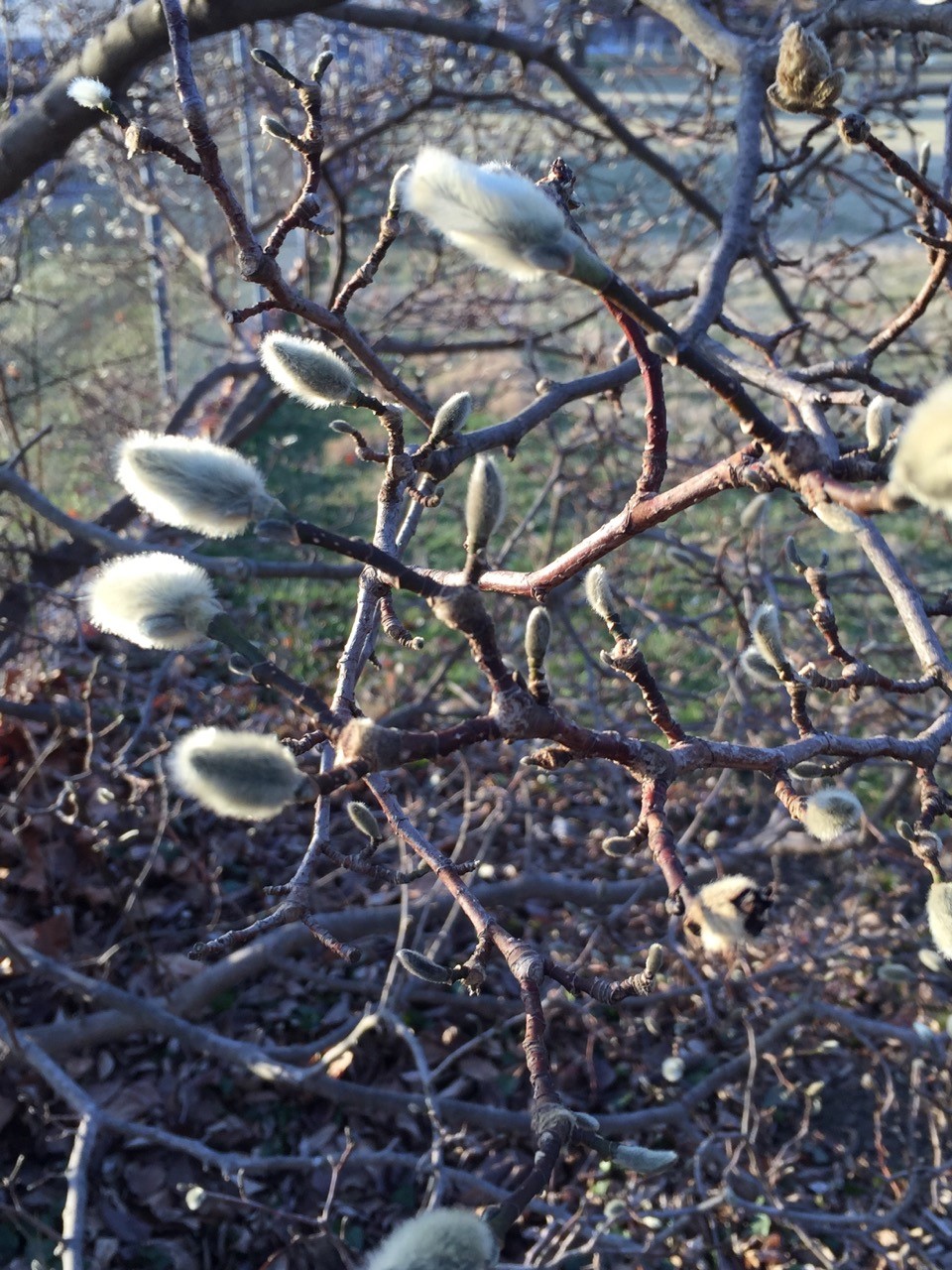
Buds on a star magnolia offer promises of brighter, warmer days ahead.
By Michael Leach
Winter brings special magic to the garden. Visions of snowy branches, frosty twigs and bluish moon shadows on clear frigid nights come to mind. But sunshine is part of the potion.
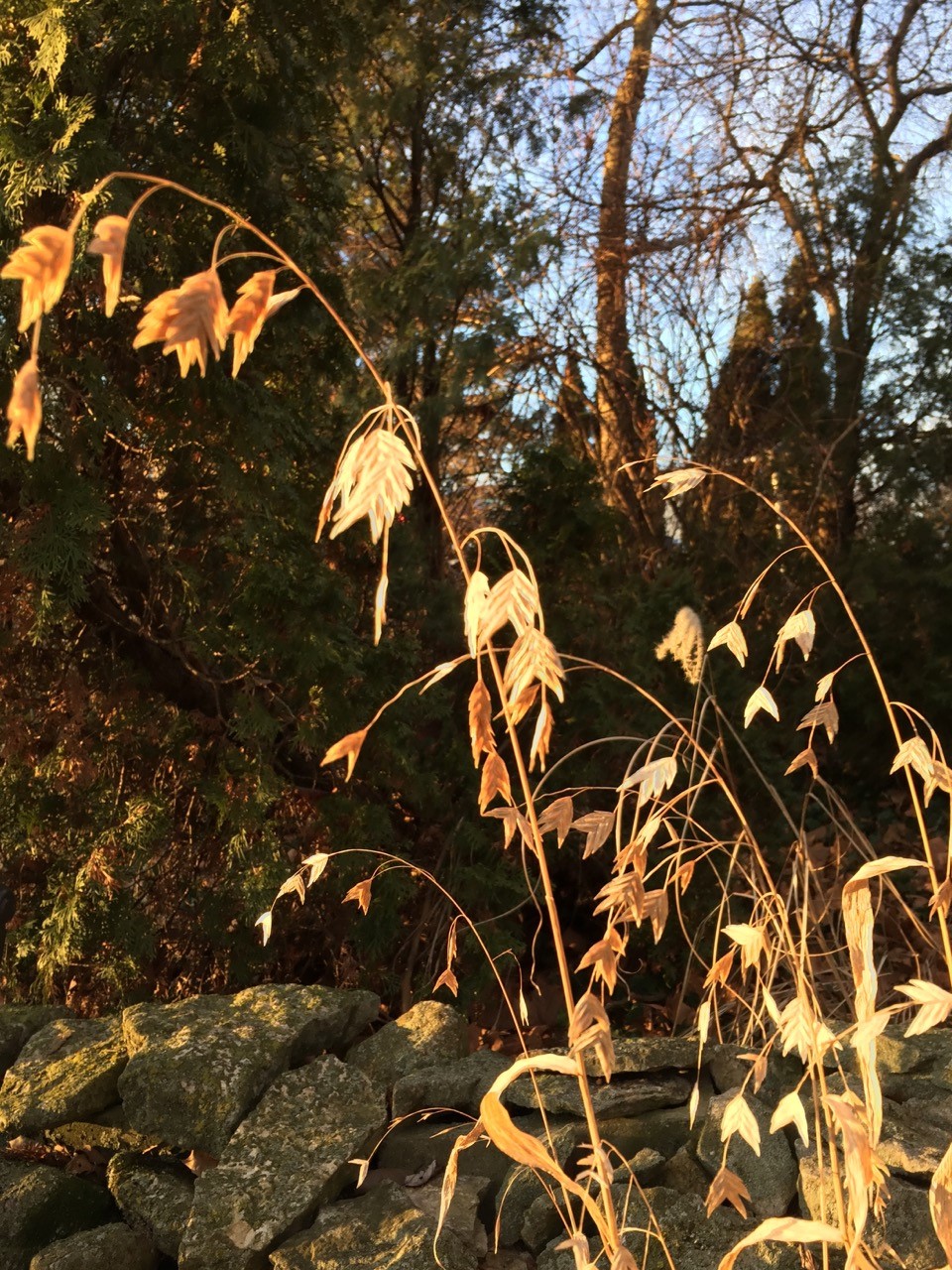
Seeds of northern sea oats glow in morning light.
In this part of the Midwest, winter sunlight can be a rare and fleeting phenomenon. Weeks of gray skies are not unusual. So there is delight when the sun makes an appearance. When those welcome rays appear in early morning and late afternoon, the garden glows softly with the burnishing effects from the sun low on the horizon.
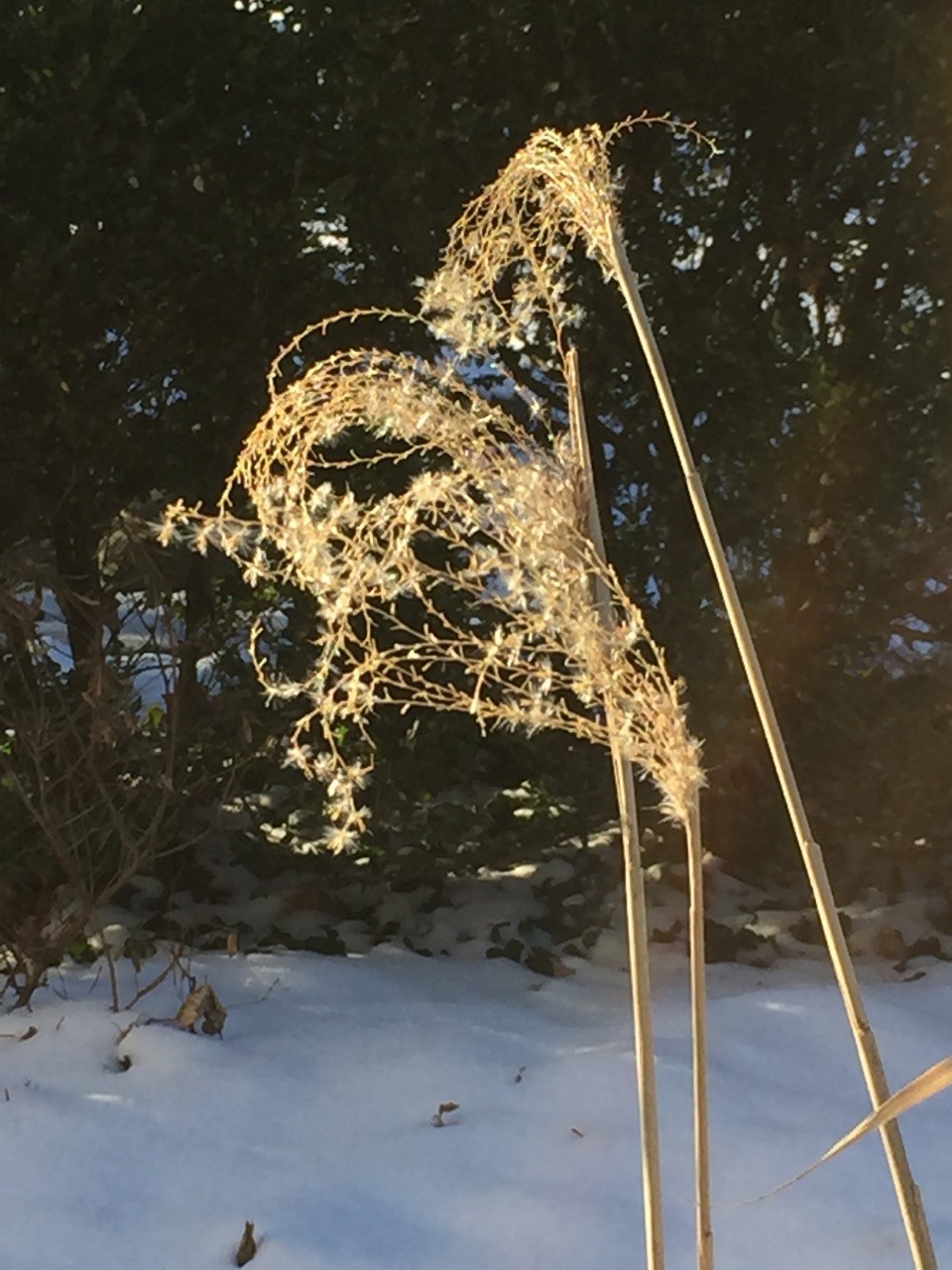
Plumes of ornamental grasses stand out against the somber backdrop of evergreens.
The poem on a garden plaque I keep meaning to buy starts, “The kiss of the sun for pardon … .” That kiss in winter, no matter how brief and infrequent, warms my heart regardless of the temperature.
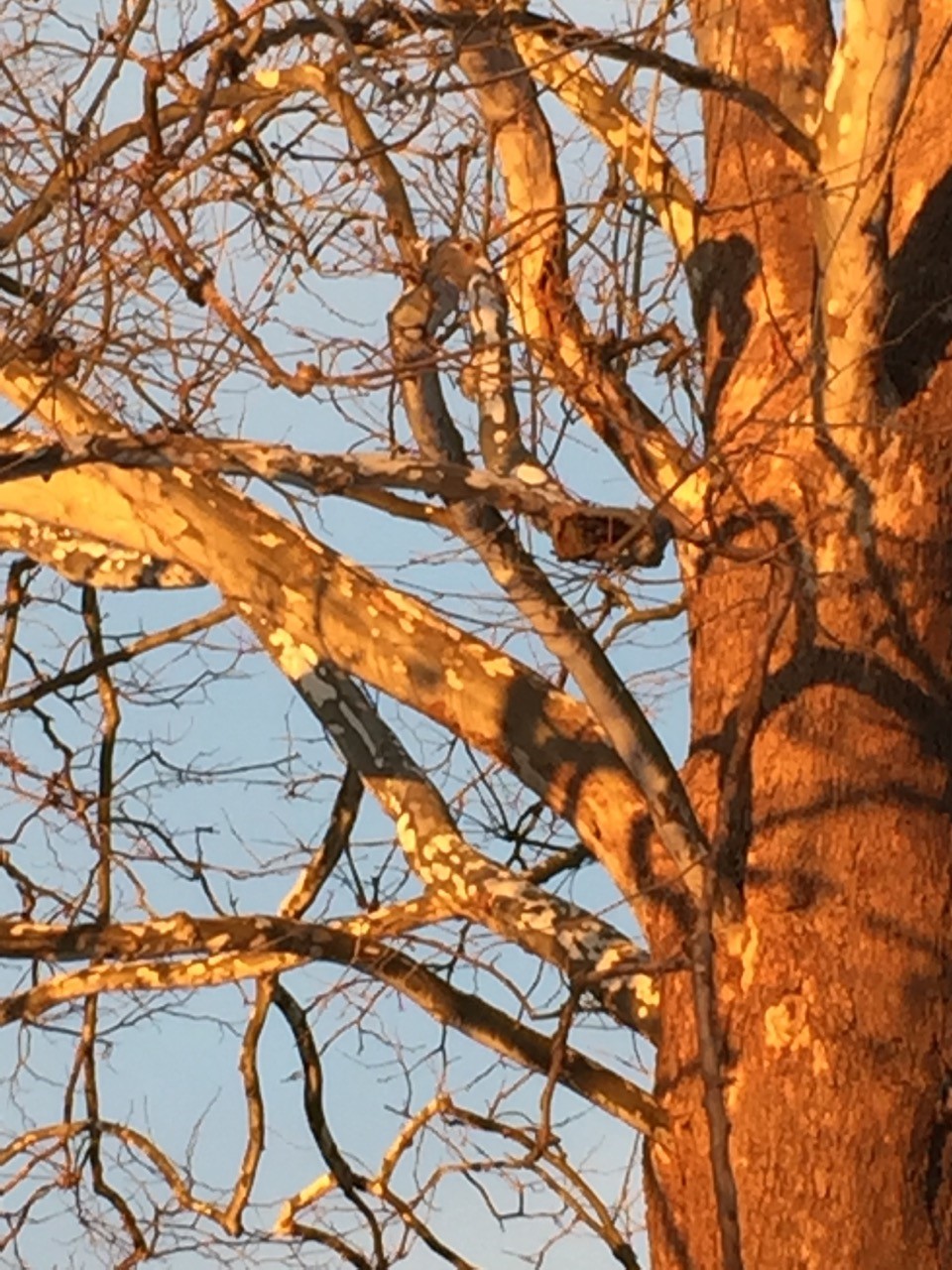
Sycamore branches are tinted with the first rays of a February day.
In recent weeks I collected images of this warming touch. Perhaps they will inspire you to go forth in the remaining days of winter to look for special effects and golden vignettes before becoming overwhelmed with all the work that lies ahead.
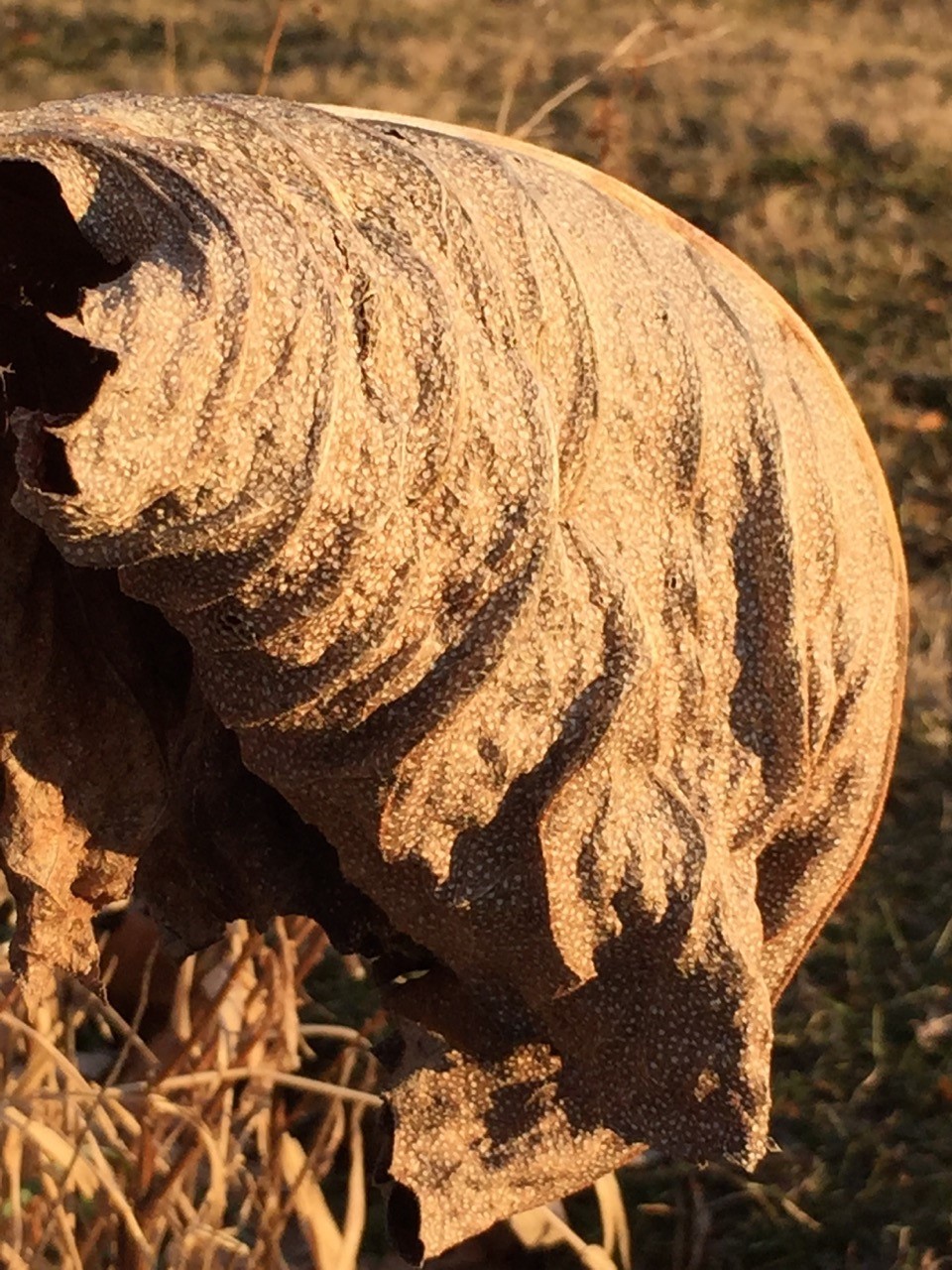
The withered giant leaf of a prairie dock wears the gilt of sunshine on a winter morn.
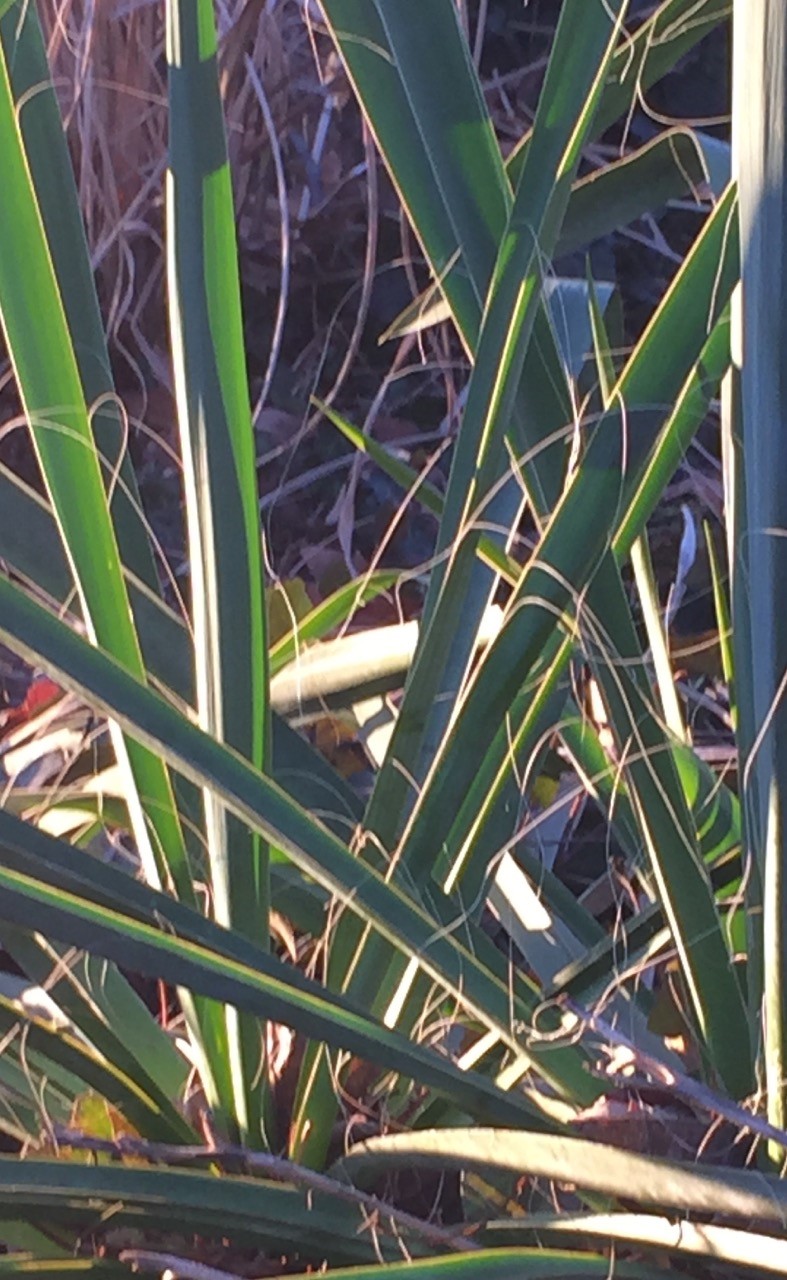
Love ’em or hate ’em, yuccas seem magical at dawn on a clear winter day.
A walk in the woods in late afternoon brings enchantment and the voice of the woodland.
[wpvideo TBhC5npZ]
by GardenLover | Nov 27, 2015 | Special Topic
What our garden inhabitants might be saying about us
By Debra Knapke
It’s the day after Thanksgiving and even the backyard critters are weighing in their thanks.
From the birds: We have enjoyed the seed cones and suet you have placed outside. The new spicy seeds and suet are epicurean delights.
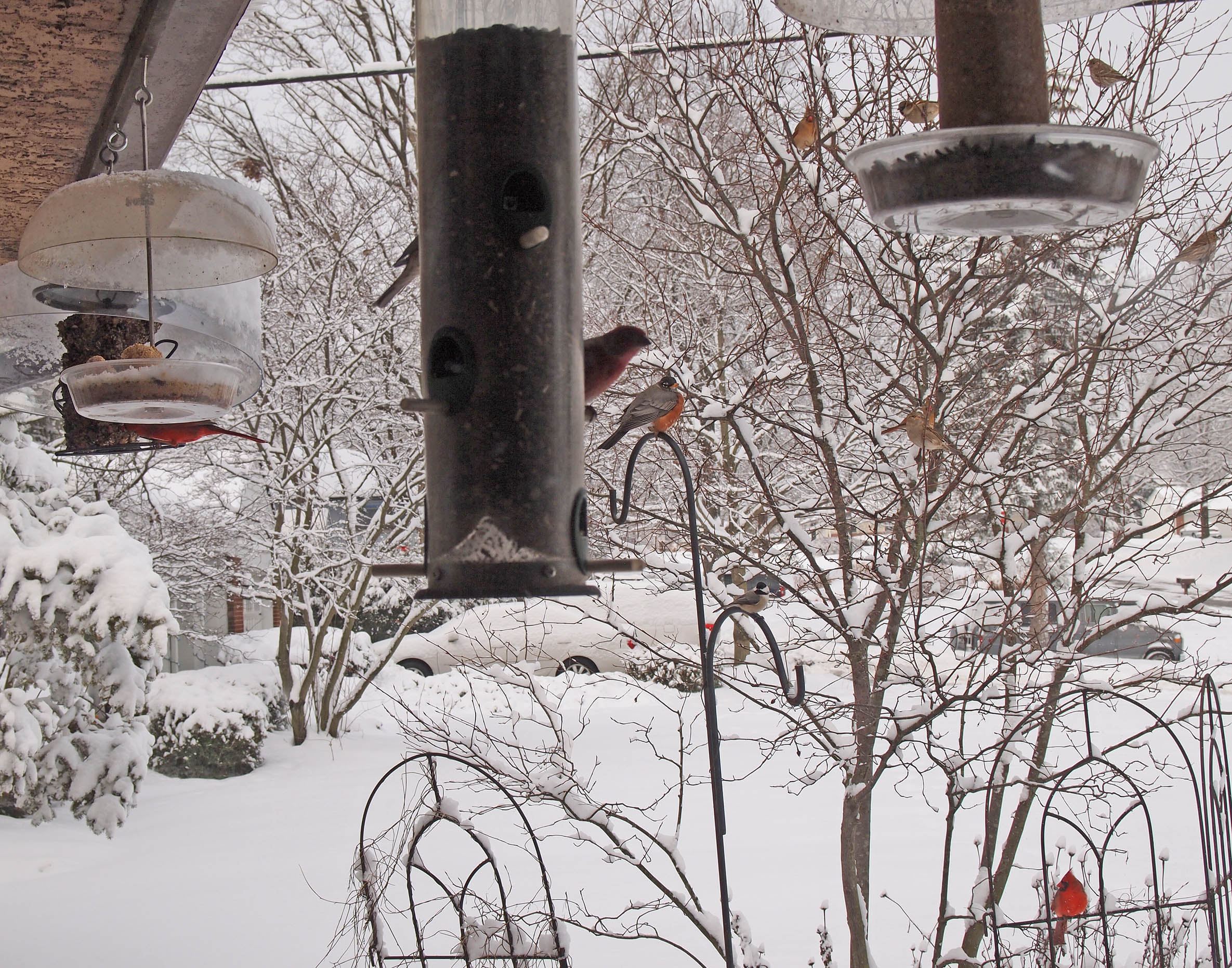
From the squirrels: Thank you for all the food you have put out for us. Our problem-solving skills have greatly improved as we have played the games you have so nicely provided for us. Please note: we do not like the spicy seed cones and suet that you have provided this year.
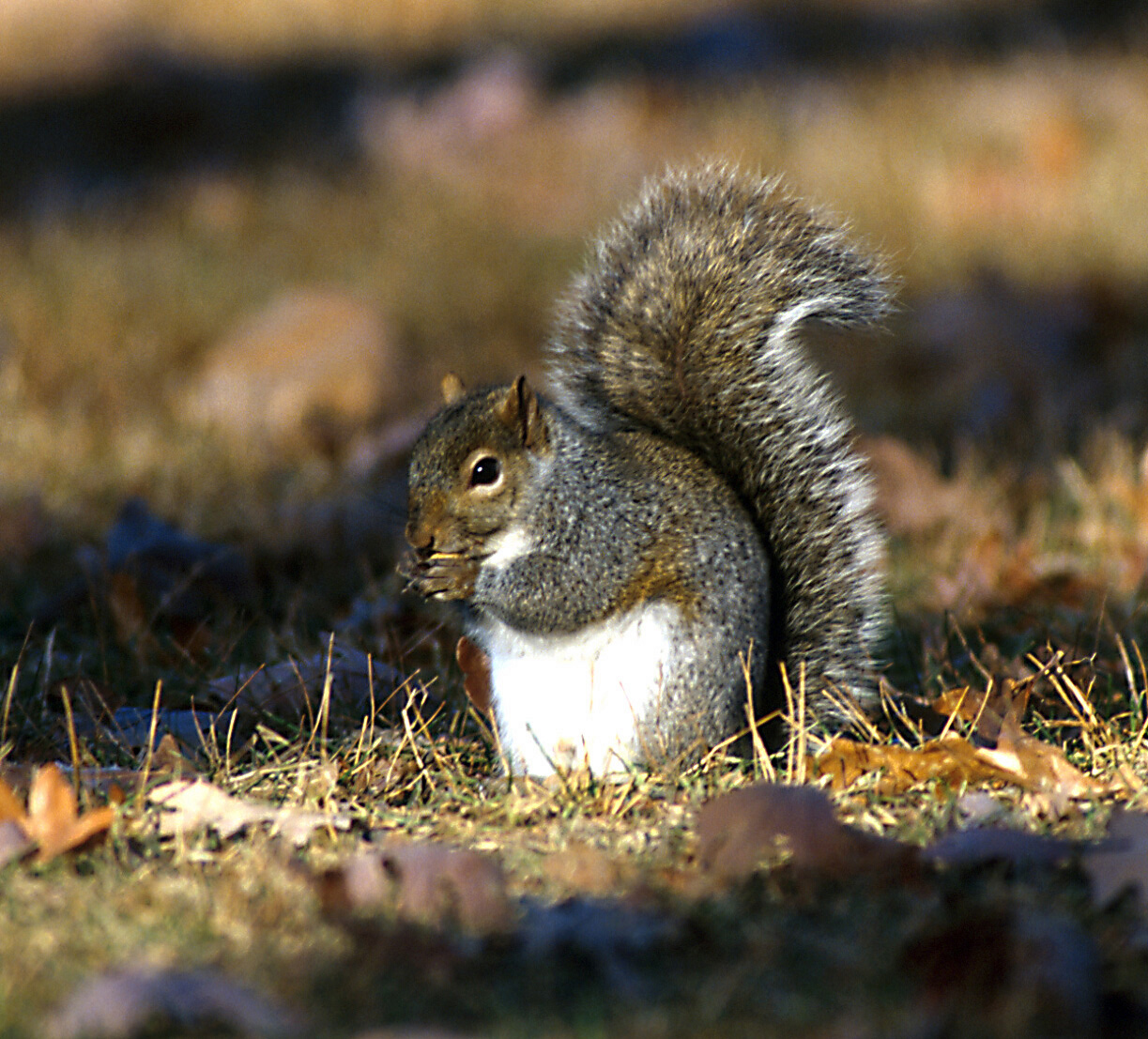
Photo from Ohio Dept. of Natural Resources
From the skunks and opossums: Thank you for the kitchen scraps that you kindly left out last year. We noticed that you are now placing them inside the large fenced-in area. Please consider leaving the scraps in a more accessible location; we deserve a pleasant Thanksgiving, too.
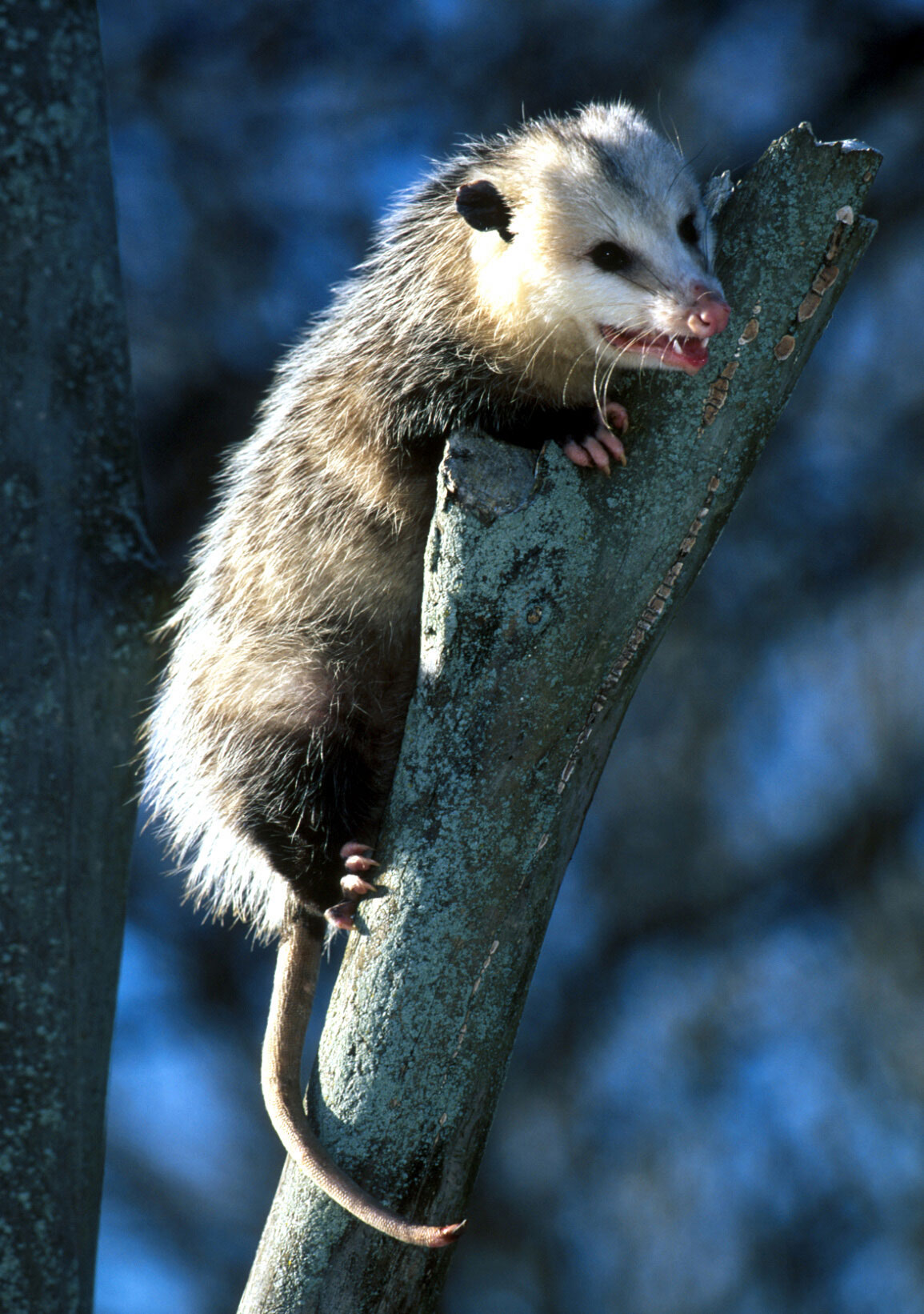
Photo from Ohio Dept. of Natural Resources
From the frogs and toads: We have enjoyed the moist places you have provided for us in your bog and rain lily pots. The area under the fig tree is nice, too.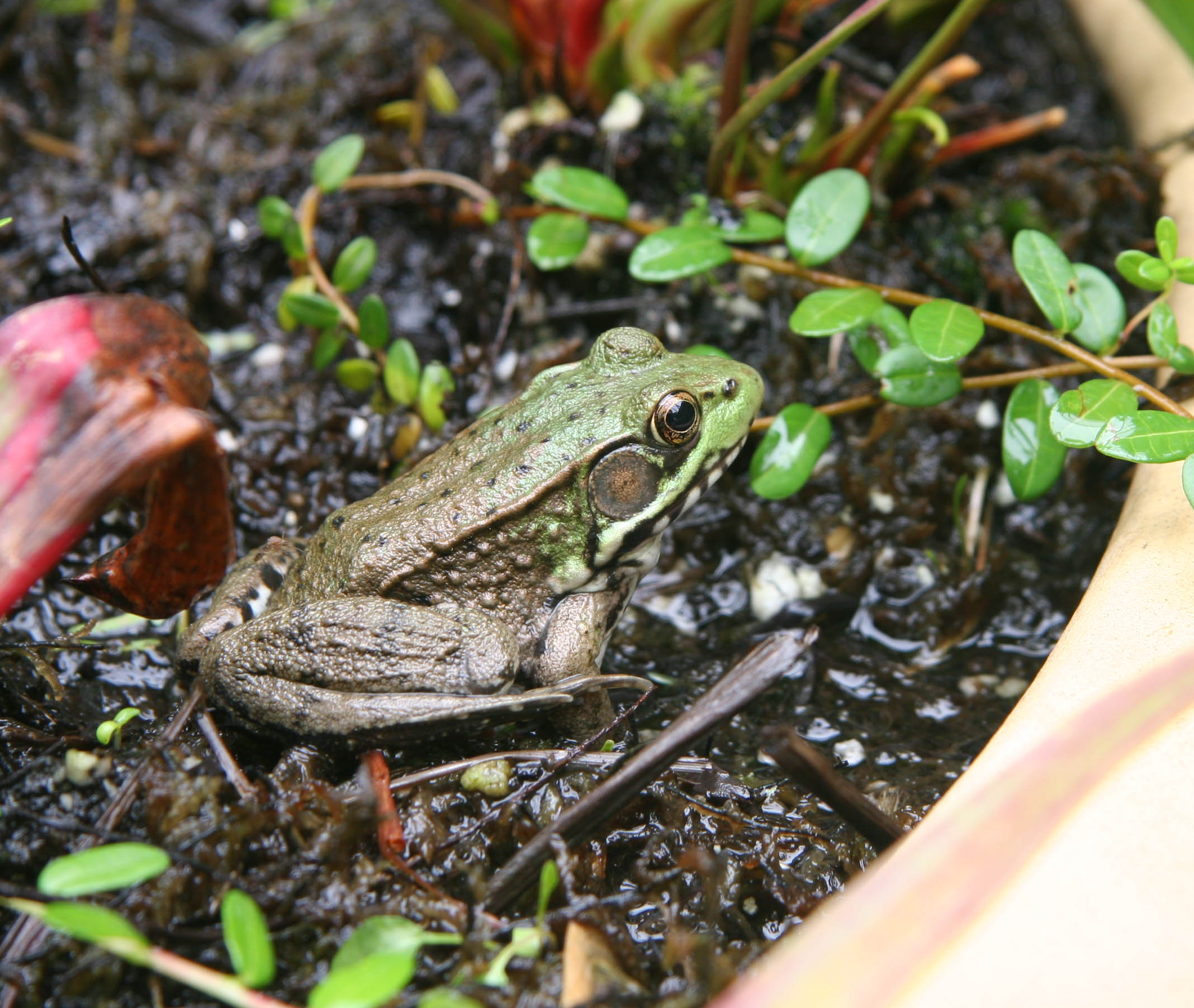
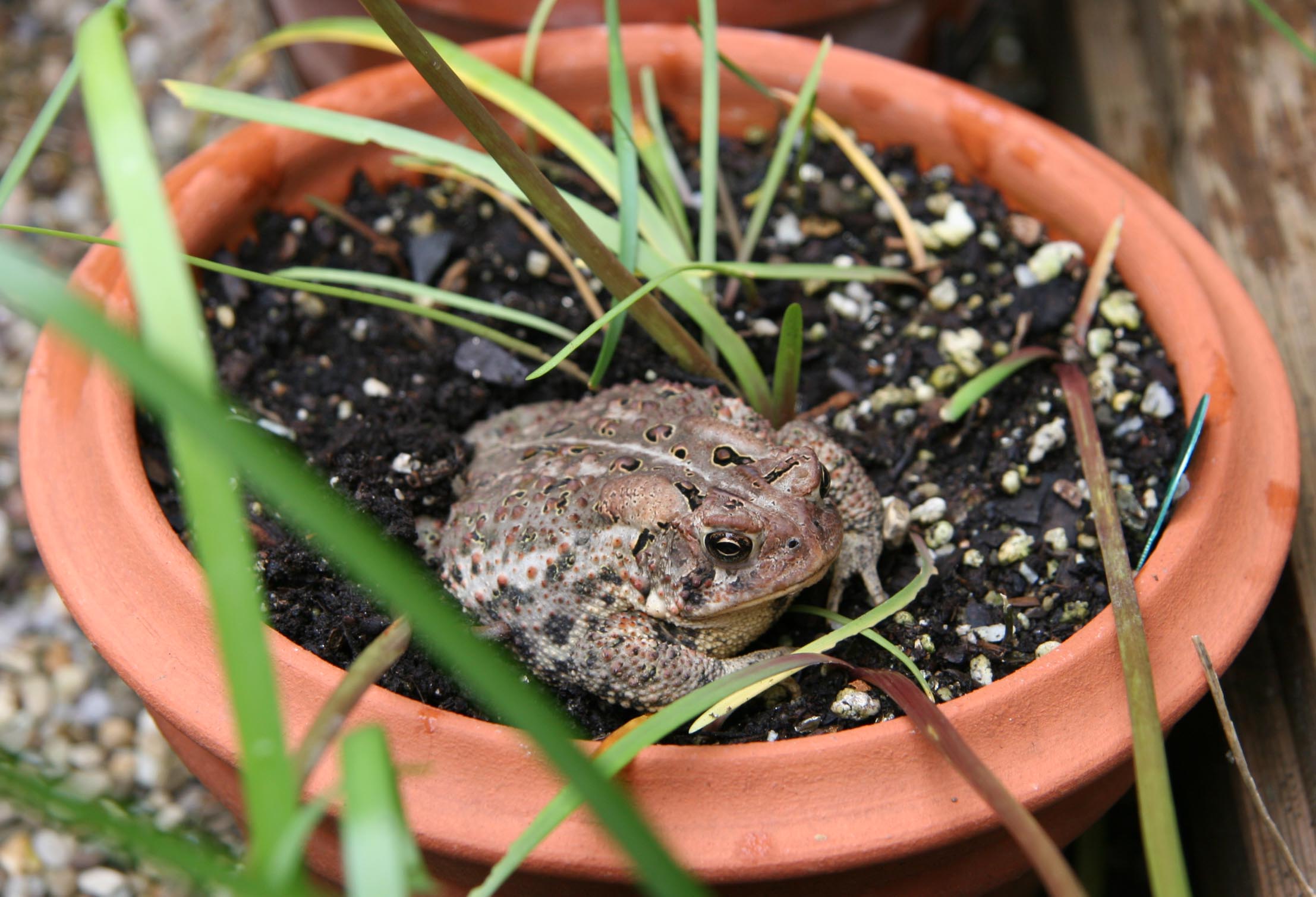
From the deer: The hostas were particularly delicious this year. We tried some other plants that were new to us; quite tasty!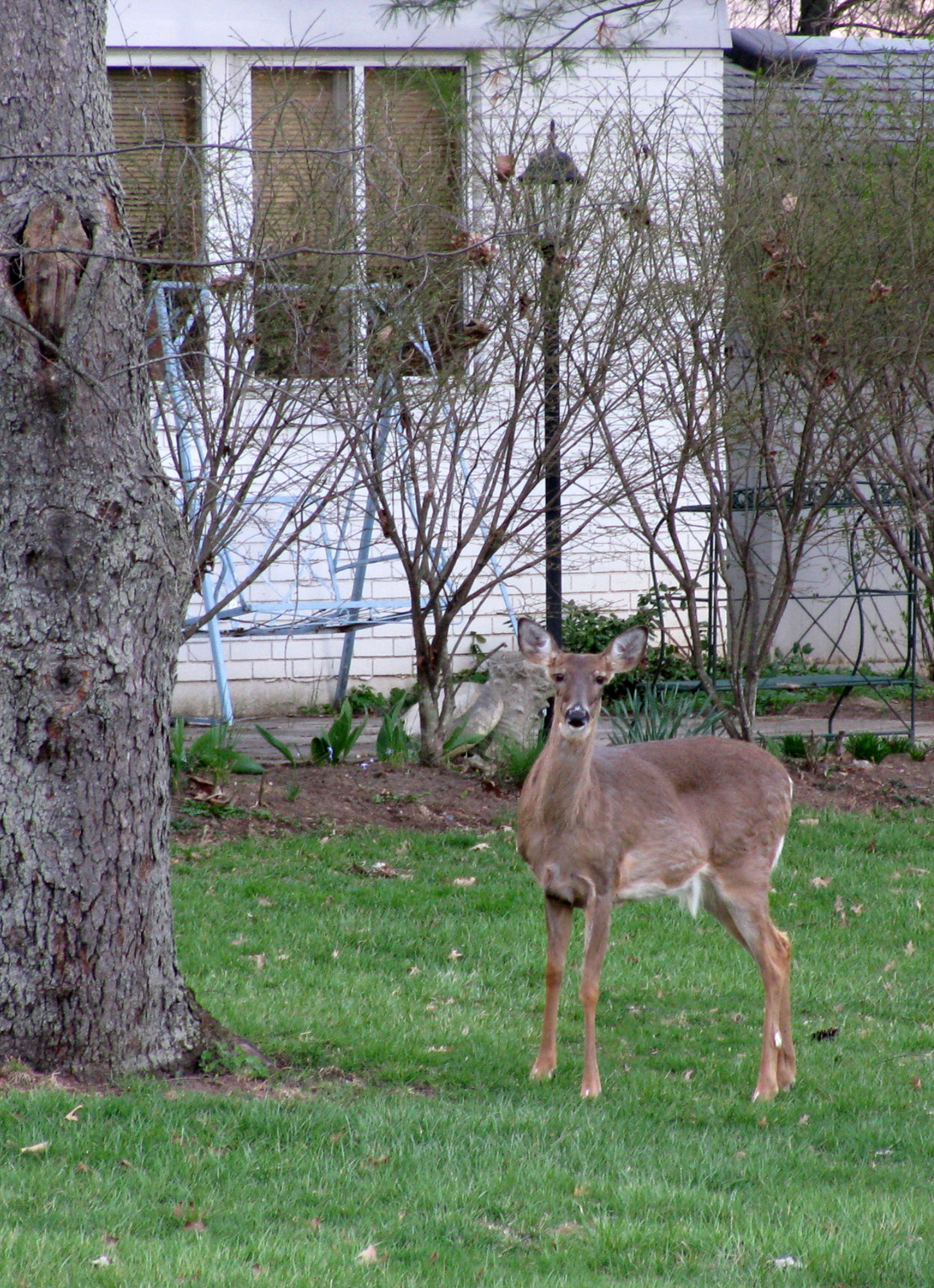
From the assassin bug: The bean trellises attracted quite a few insects for my eating enjoyment. I apologize for startling you as you were picking beans for dinner. I hope you noticed I moved quickly away from your hand.
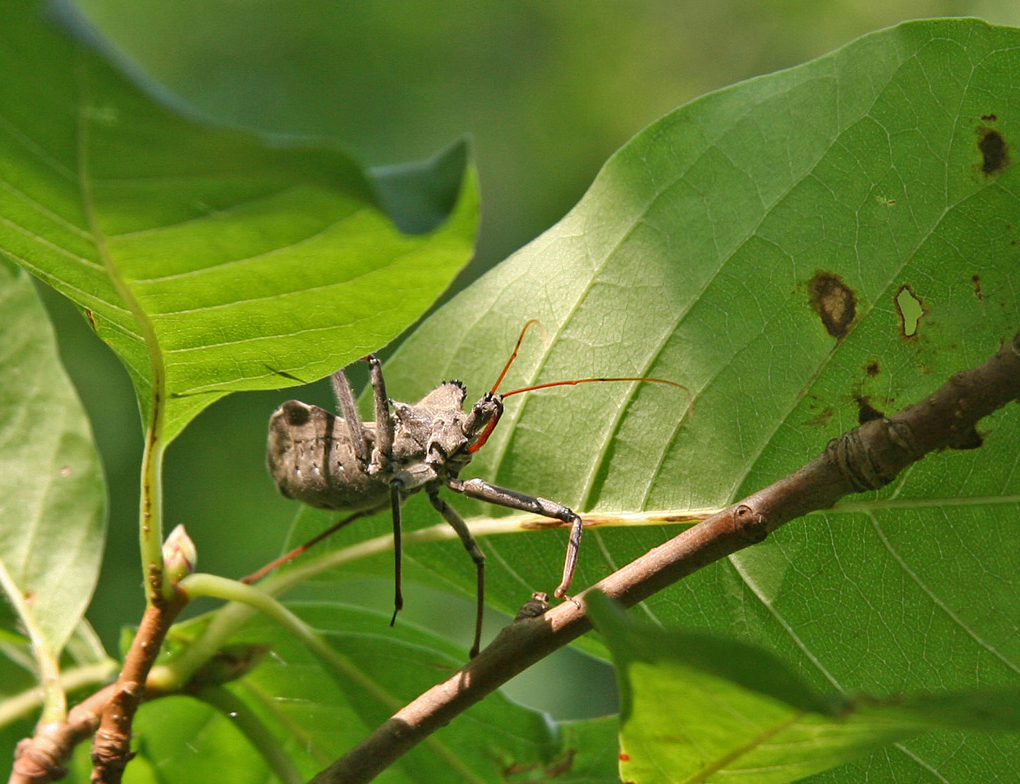
I was not carrying my camera while harvesting beans, so here is an assassin bug in my magnolia.
From the bees: Thank you for the myriad of blooms that sustained us through this tough season. The spring was very wet and it was a challenge to gather nectar and pollen in the rain. We made up for it in your summer and fall flowers.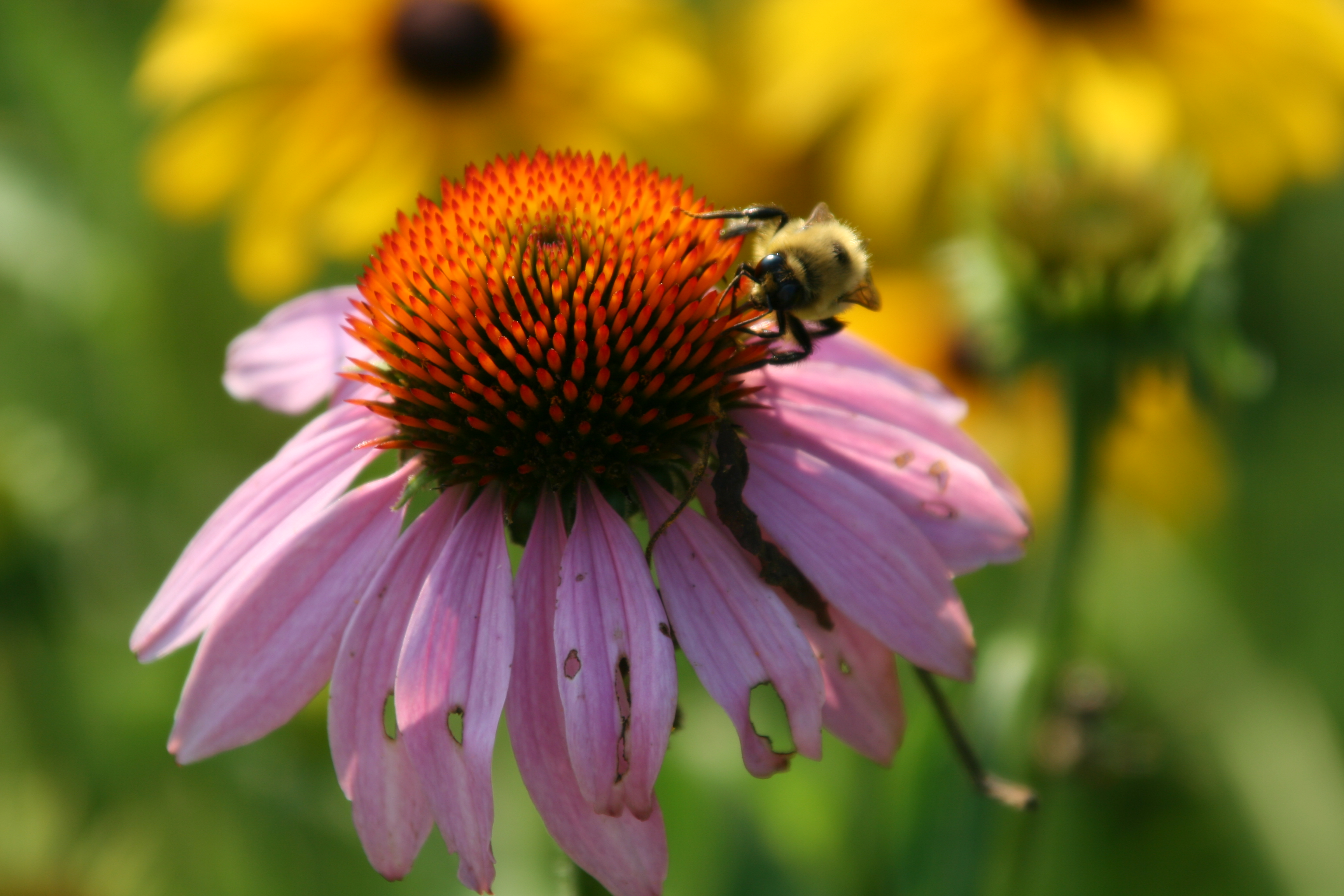
From the spiders: We appreciate that you did not remove us from your window by your sink and over your front door (sorry about scaring your daughter, but we noticed that your granddaughter thought we were cool). both places were perfect for catching unwary insects.
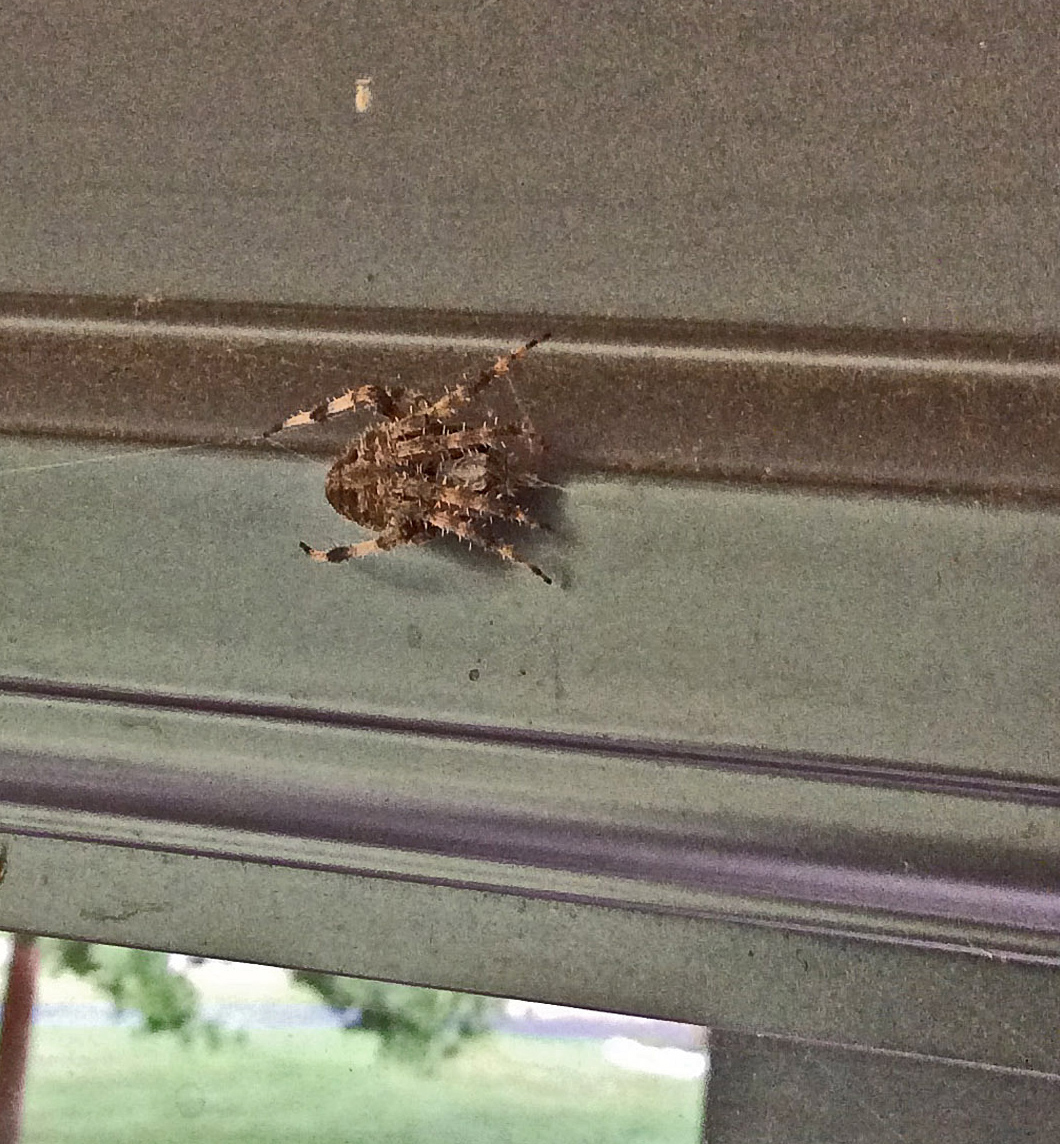
She was about 1” in diameter when her legs are pulled in close to her body as you see here. Fully extended she was over 1 ½” in diameter. Here she is perched above the door, in the shade, during the day.
PS: Thank you to all of the species that share “my” garden. I have enjoyed watching you and learning so many lessons.
by GardenLover | Nov 10, 2015 | Garden profile, Misc., Special Topic
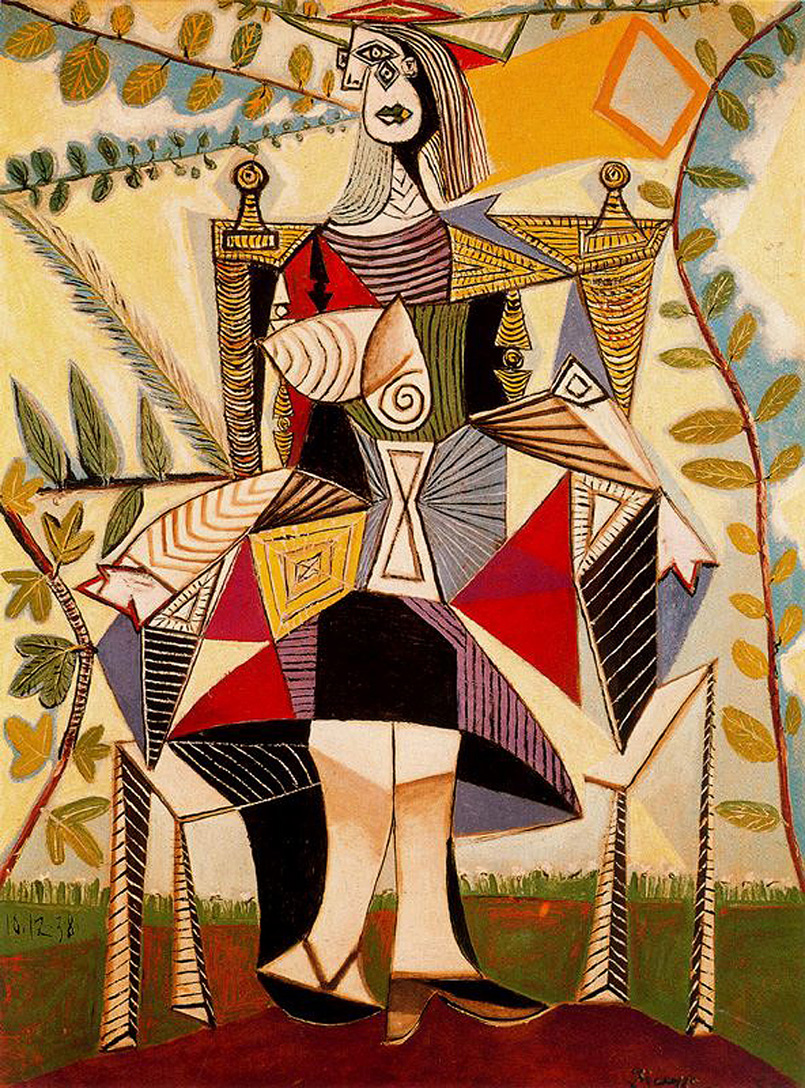 Six Timeless Quotes To Inspire Fresh Garden Ideas
Six Timeless Quotes To Inspire Fresh Garden Ideas
By Teresa Woodard
As gardeners reflect on the past season and plan for the next, I thought I’d share these inspiring quotes from painting master Pablo Picasso as they were restated in a recent story in Entrepreneur magazine.
- Bad artists copy. Good artists steal. Just as in the art world, no ideas in the gardening world are new. So, yes, I’ll be stealing lots of ideas — like elements of this massive border — from this summer’s round of garden tours.
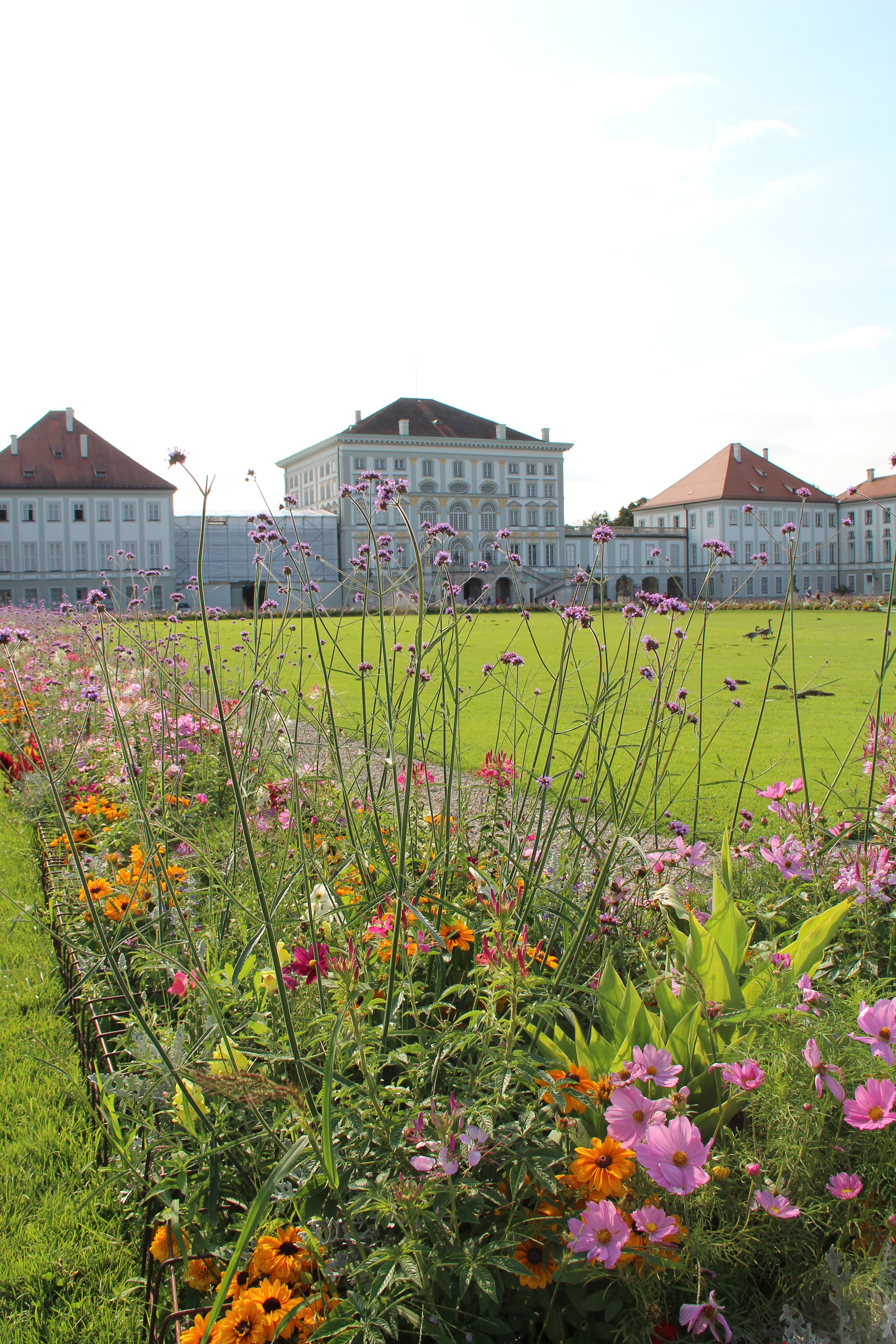
- Everything you can imagine is real. A few gardens I saw this year truly stretched my imagination. For example, King Ludwig’s underground garden grotto or the Bellagio Conservatory’s crane topiary may seem a bit surreal, but they do inspire big thinking.

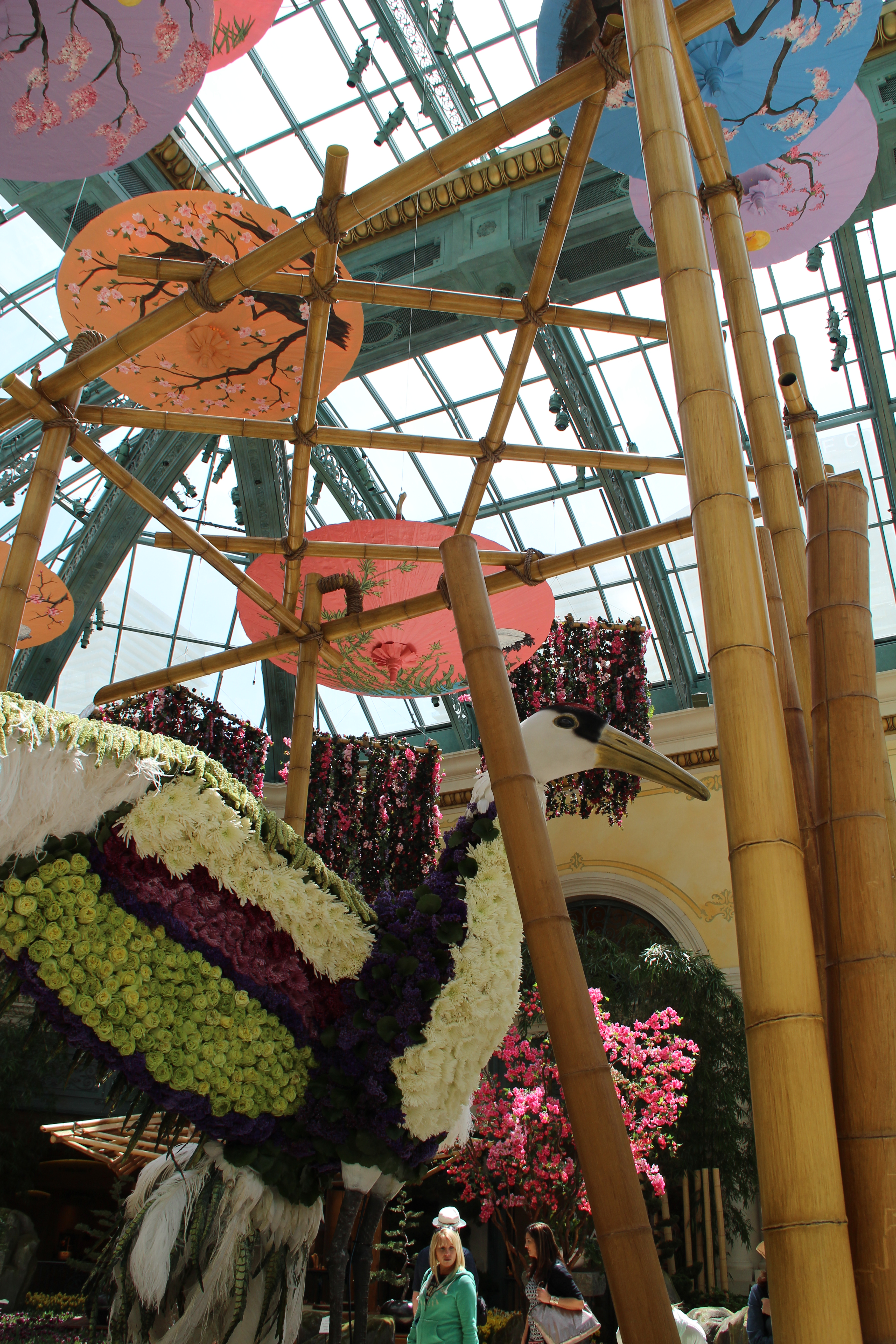 Art is the elimination of the unnecessary. As a garden writer, I tend to collect too many different plants which often creates a cluttered look in my garden. So, a goal for next season is to accumulate more of the most dazzling plants and donate those unnecessary ones to the Master Gardener Volunteers’ spring plant sale. One day, I’m envisioning rivers of plants like these Adrian Bloom designs
Art is the elimination of the unnecessary. As a garden writer, I tend to collect too many different plants which often creates a cluttered look in my garden. So, a goal for next season is to accumulate more of the most dazzling plants and donate those unnecessary ones to the Master Gardener Volunteers’ spring plant sale. One day, I’m envisioning rivers of plants like these Adrian Bloom designs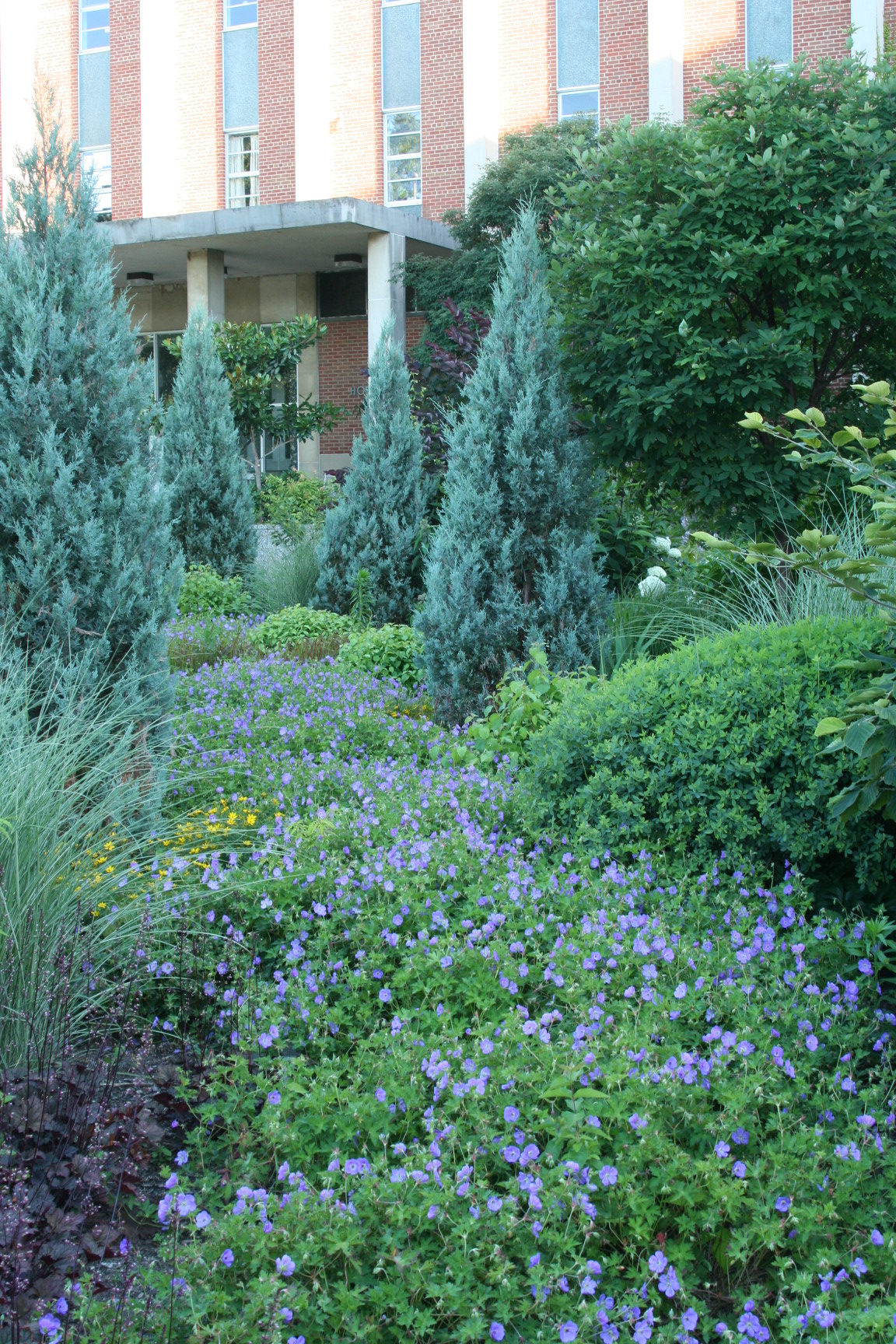
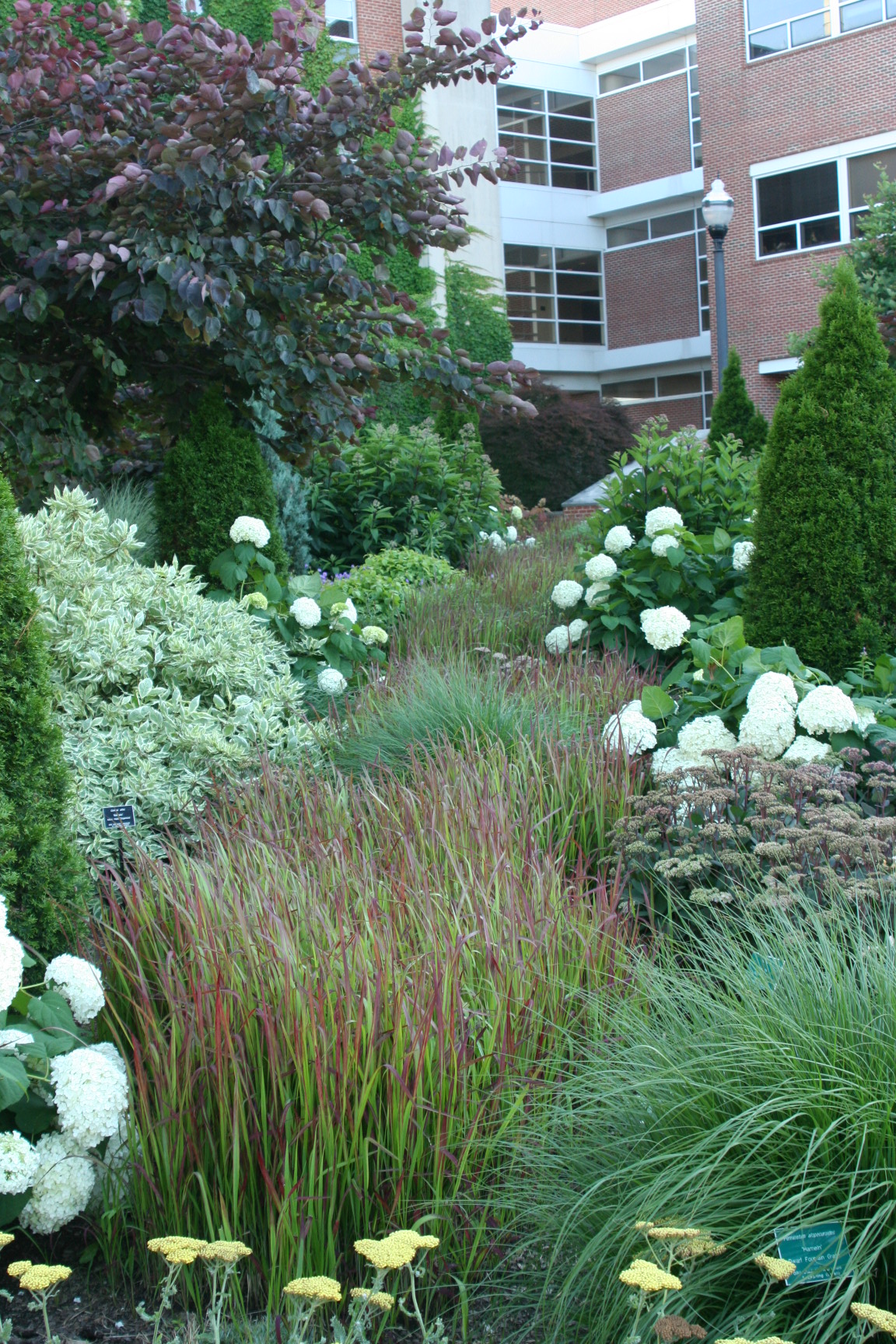 at Chadwick Arboretum.
at Chadwick Arboretum.- Action is the foundational key to all success. Can I hear an “Amen”? This truth undoubtedly applies to gardening and anything else in life. So, check back with me in a year, and see if I took action on the 10 new ideas in my journal to-do list.
 All children are artists. The problem is how to remain an artist once we grow up. I’m grateful to have teenagers and young neighbors to bring their youthful spirit to the garden. Thanks to them I planted peanuts, apple gourds, ghost peppers and crazy succulents. Some ghost peppers even ended up in the high school cafeteria and caused several dared friends to lose their lunch as they choked them down whole.
All children are artists. The problem is how to remain an artist once we grow up. I’m grateful to have teenagers and young neighbors to bring their youthful spirit to the garden. Thanks to them I planted peanuts, apple gourds, ghost peppers and crazy succulents. Some ghost peppers even ended up in the high school cafeteria and caused several dared friends to lose their lunch as they choked them down whole.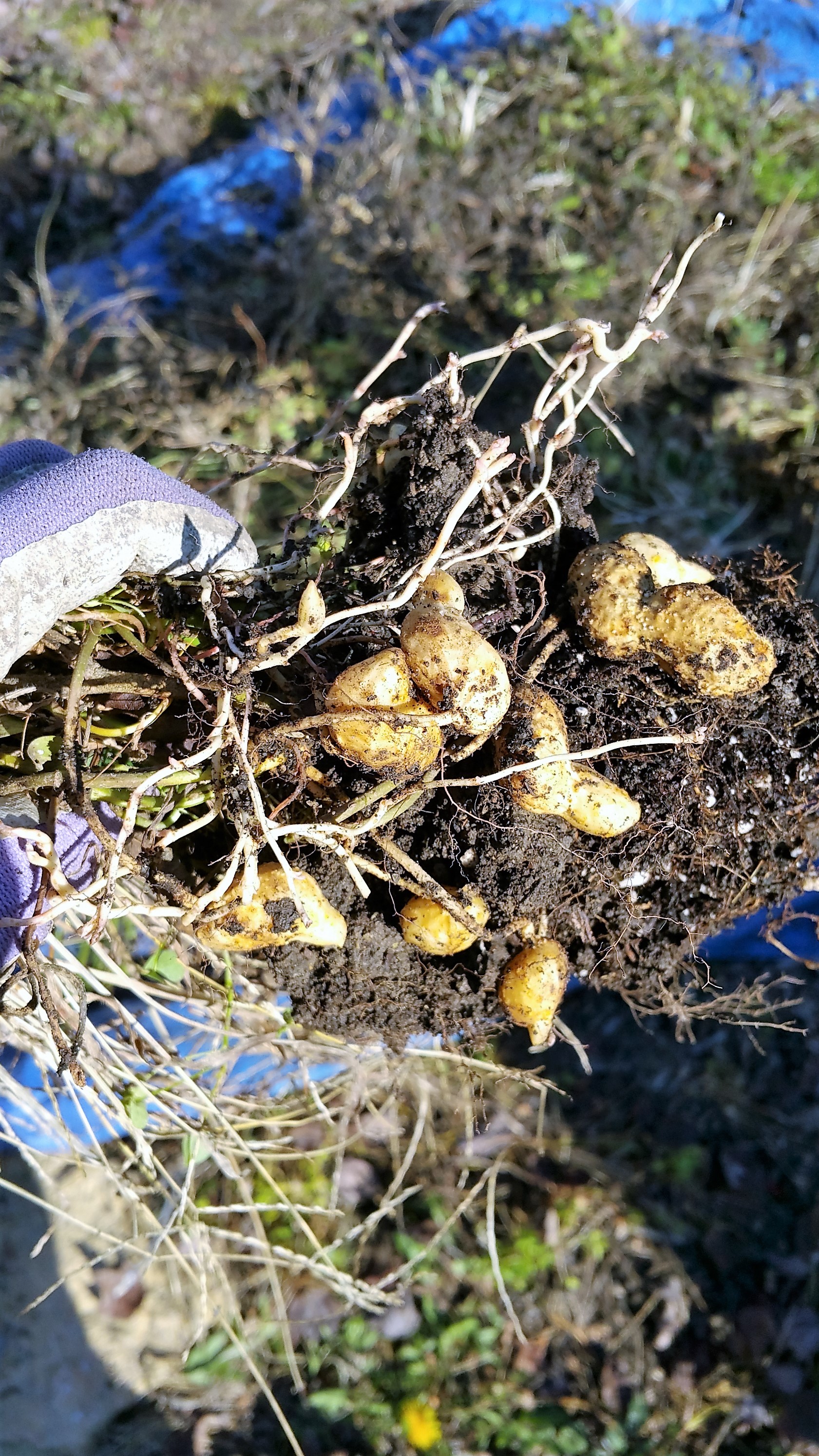 I paint objects as I think them, not as I see them. As I hack ideas from great garden designs, I can bend them to my own vision for my space, budget, growing zone and personal style. Here, I’ve planted hundreds — not thousands — of Spanish bluebells (Hyacinthoides hispanica) to achieve my own scaled-back version of this spectacular tulip display.
I paint objects as I think them, not as I see them. As I hack ideas from great garden designs, I can bend them to my own vision for my space, budget, growing zone and personal style. Here, I’ve planted hundreds — not thousands — of Spanish bluebells (Hyacinthoides hispanica) to achieve my own scaled-back version of this spectacular tulip display.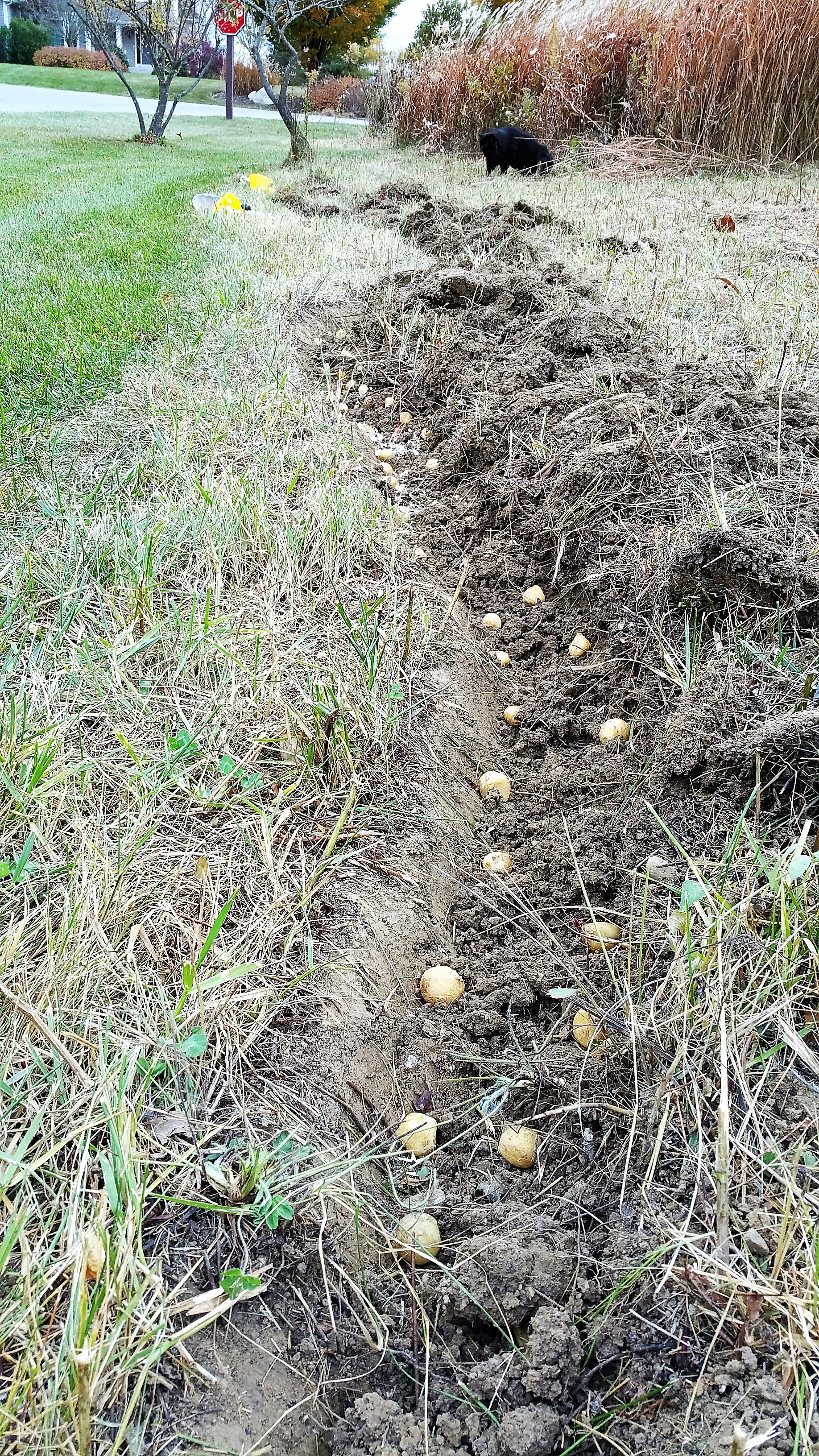
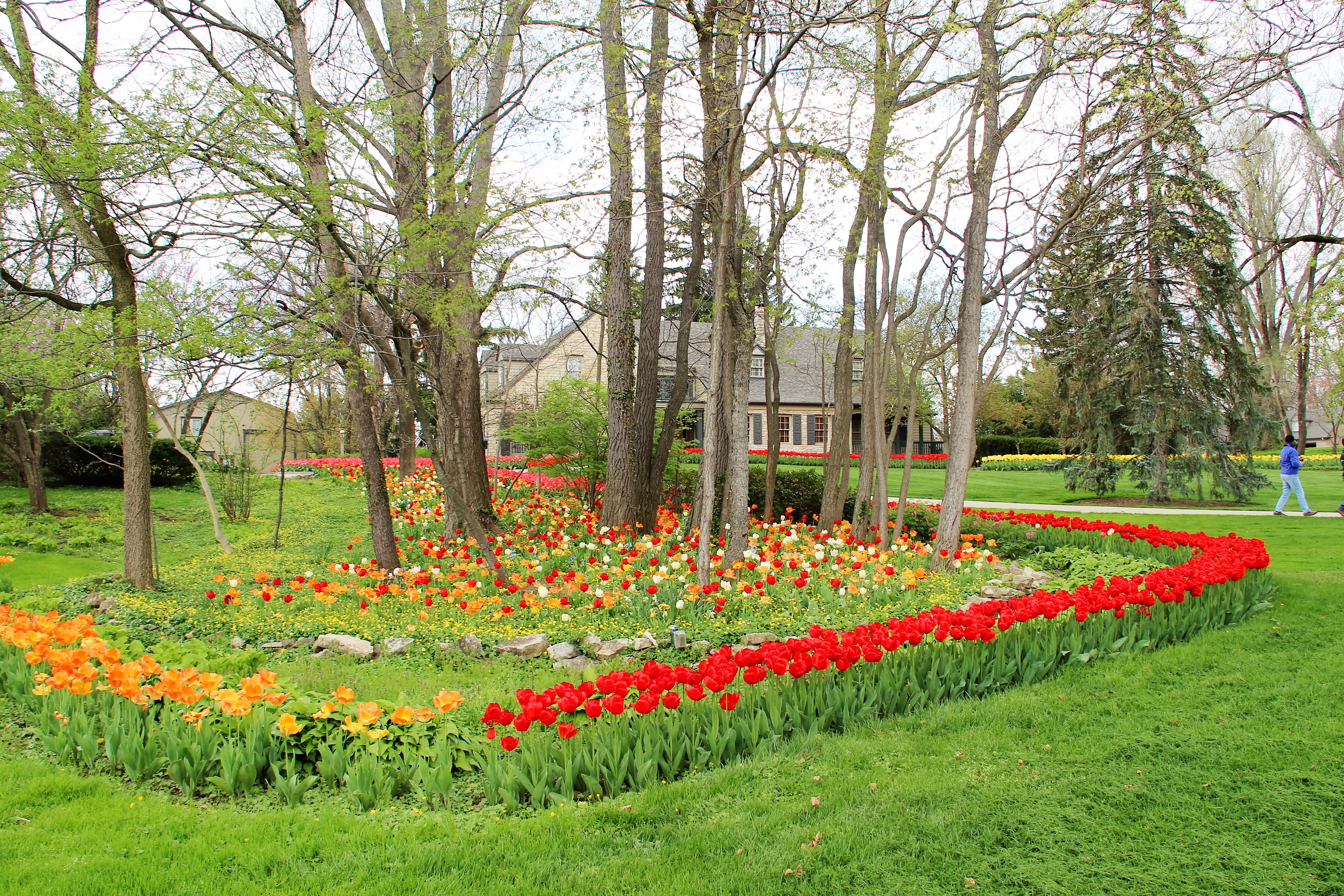
Check out the After Picasso: 80 Contemporary Artists at the Wexner Center for the Arts, through Dec. 27.
by GardenLover | Oct 31, 2015 | Special Topic
What we do with them and to them…
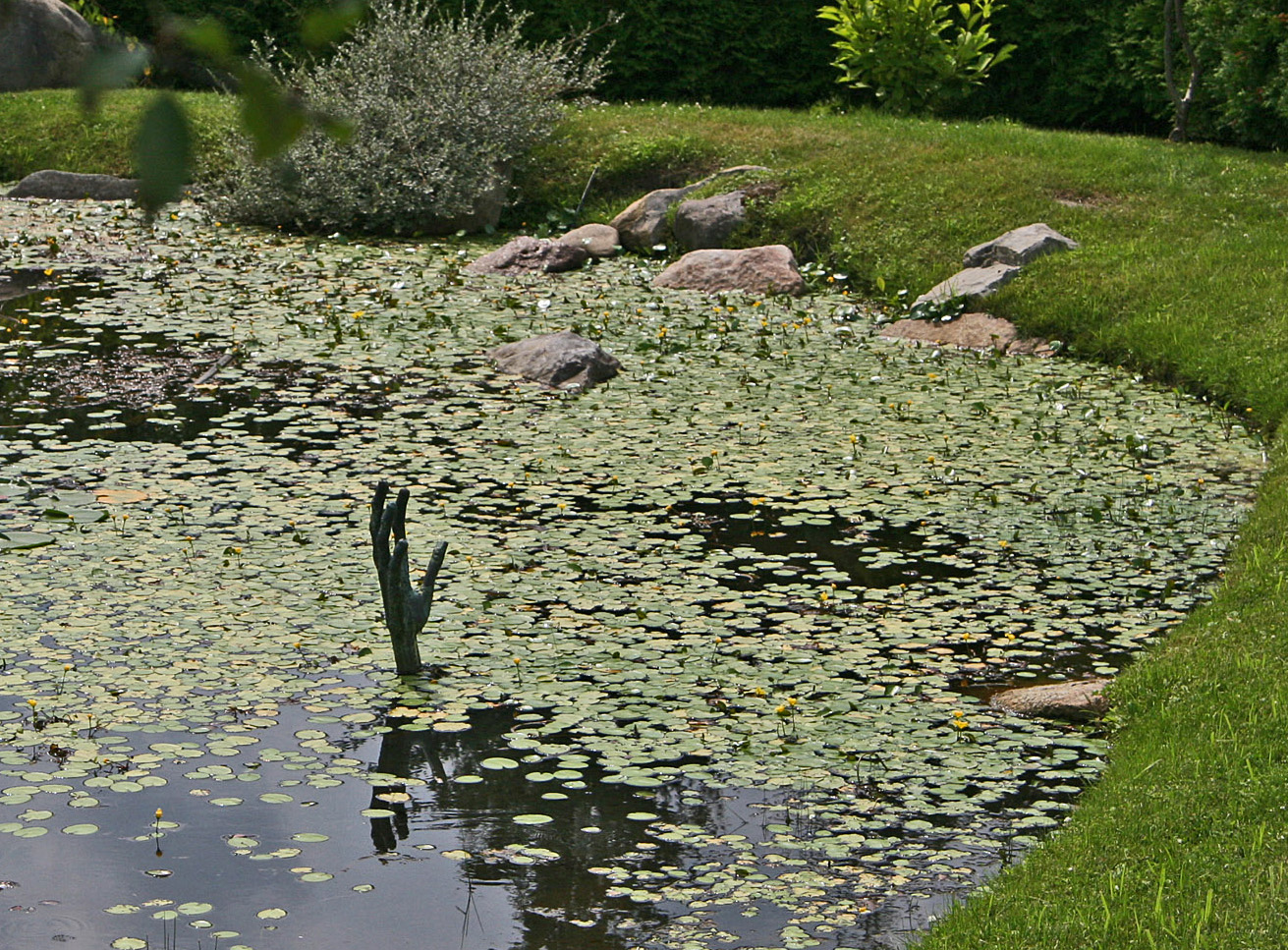
By Debra Knapke
While some plants have scary attributes and uses (see Michael’s post on Scary Plants from October 15th) we often add to the scariness of plants by how we use and abuse them.
Sometimes plants are the backdrop for a scary moment. While on a garden tour at an artist’s home I turned a corner and saw this chilling vignette. You know the feeling: your heart stops for a moment – then you realize it isn’t real… or is it?
But the scariest moments are when I see plants that we have massacred Freddy Krueger style a la the endless Nightmare on Elm Street series.
Below is a variegated English oak that is in my garden. I made the initial mistake of planting it too close to overhead wires. As a result of assuming what I was told was true (this tree only will grow to 15’ tall, max!), it became one of the casualties of a line clearance crew. One day, I came home to see the dreaded blue dot on the trunk. If I had had warning, I would have called in my arborist, but the crew came the next day. After briefly mourning the loss of my tree, I asked the crew to cut down the tree. It is now sprouting from the stump, and I have a variegated English oak shrub.
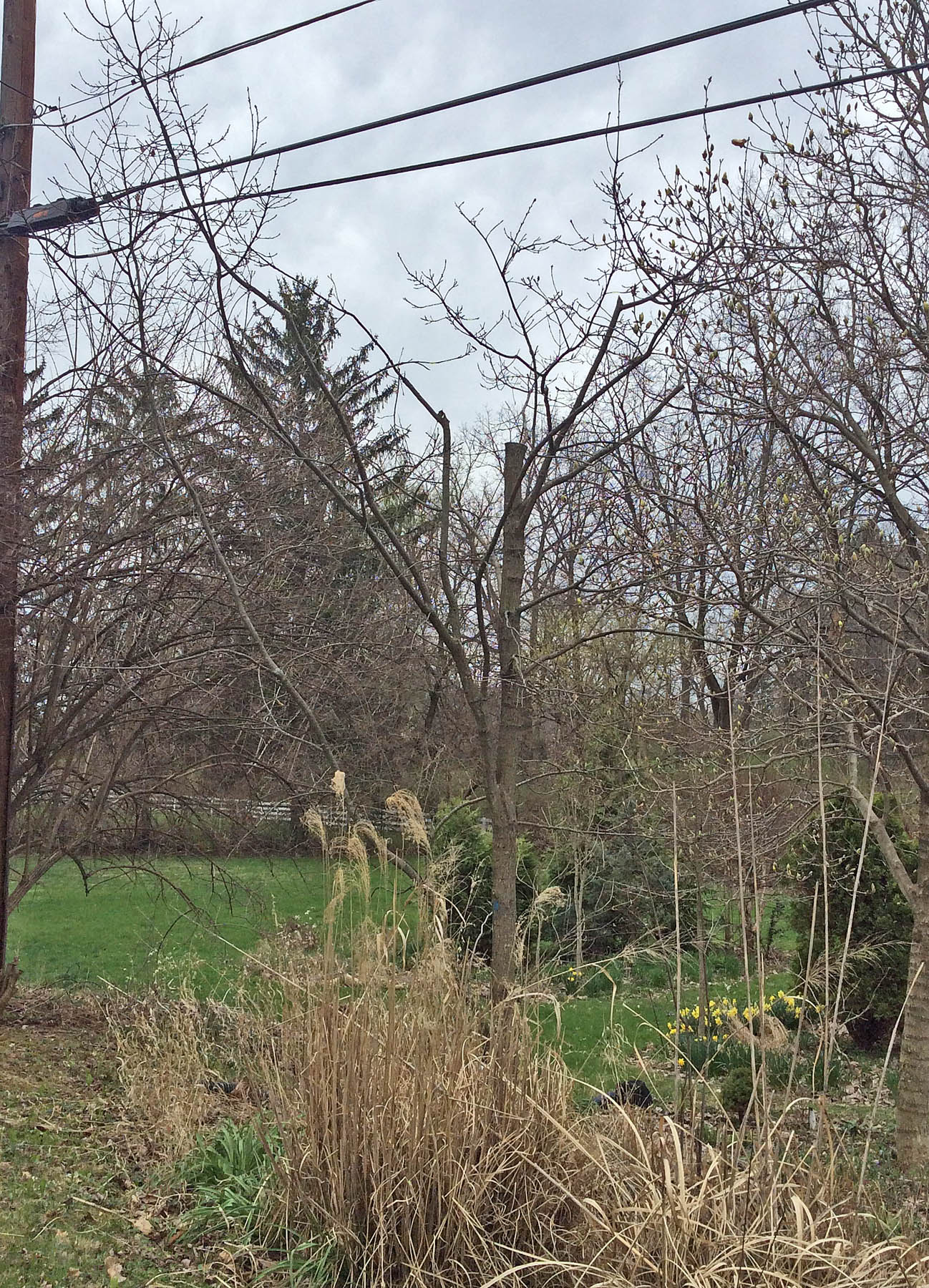
A topped variegated English oak
Why is poor pruning scary? It stresses a plant, and this increases the probability that insects and disease will be able to get past a plant’s defense mechanisms. A very real consequence of poor pruning is the creation of a “hazard” tree. In some cases, the structure of poorly pruned tree is so compromised that the first windstorm will tear it apart. No one wants to see a large limb fall on a car or a person!
Exhibit B: the pruning of a line of honey locusts at a shopping center in Columbus, Ohio.
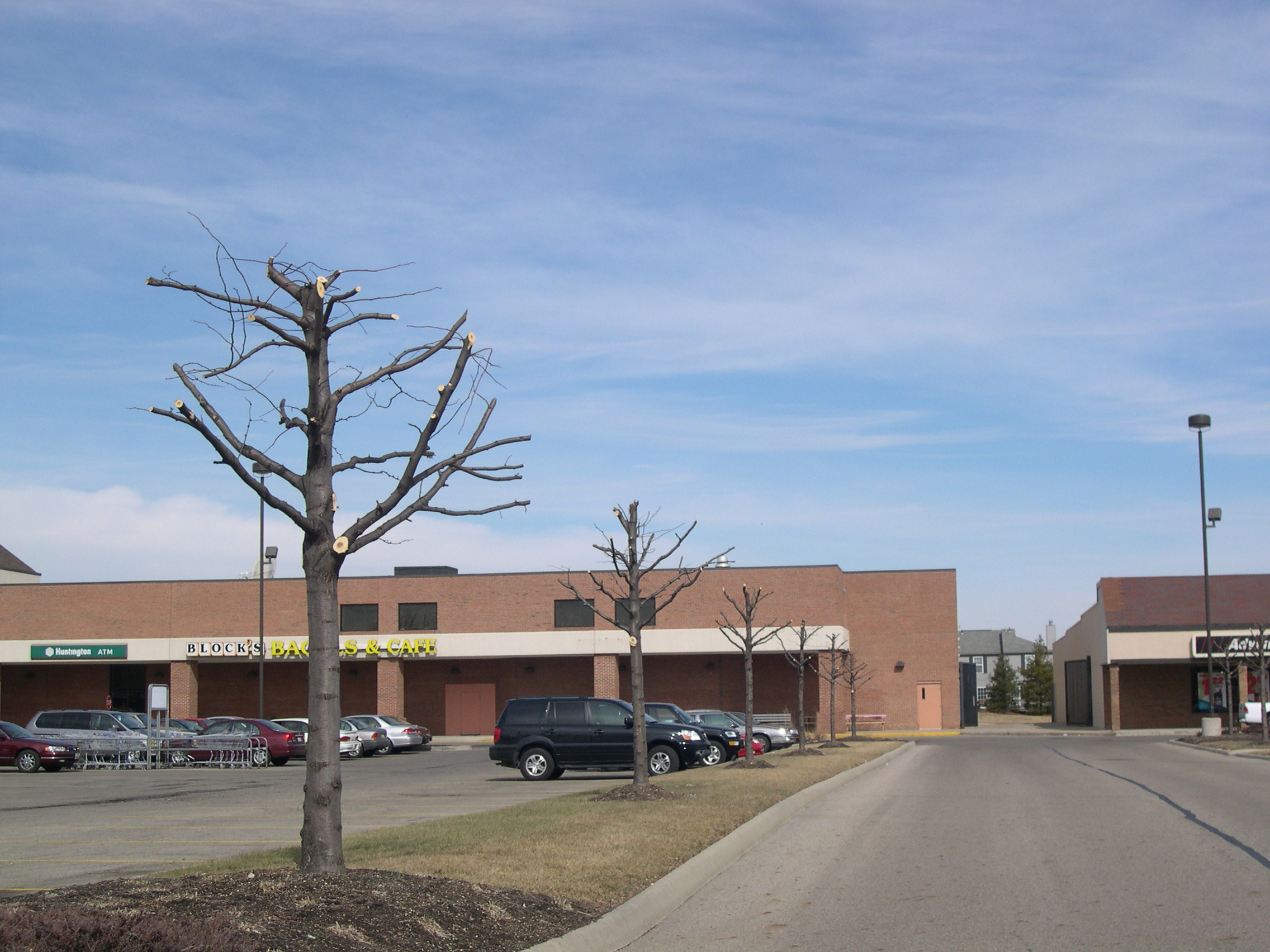
Improper pruning
A close-up look shows us what should never happen to a tree: stub cuts, shredded wood and bark, and topping. I took these pictures in 2003. None of these trees survived.
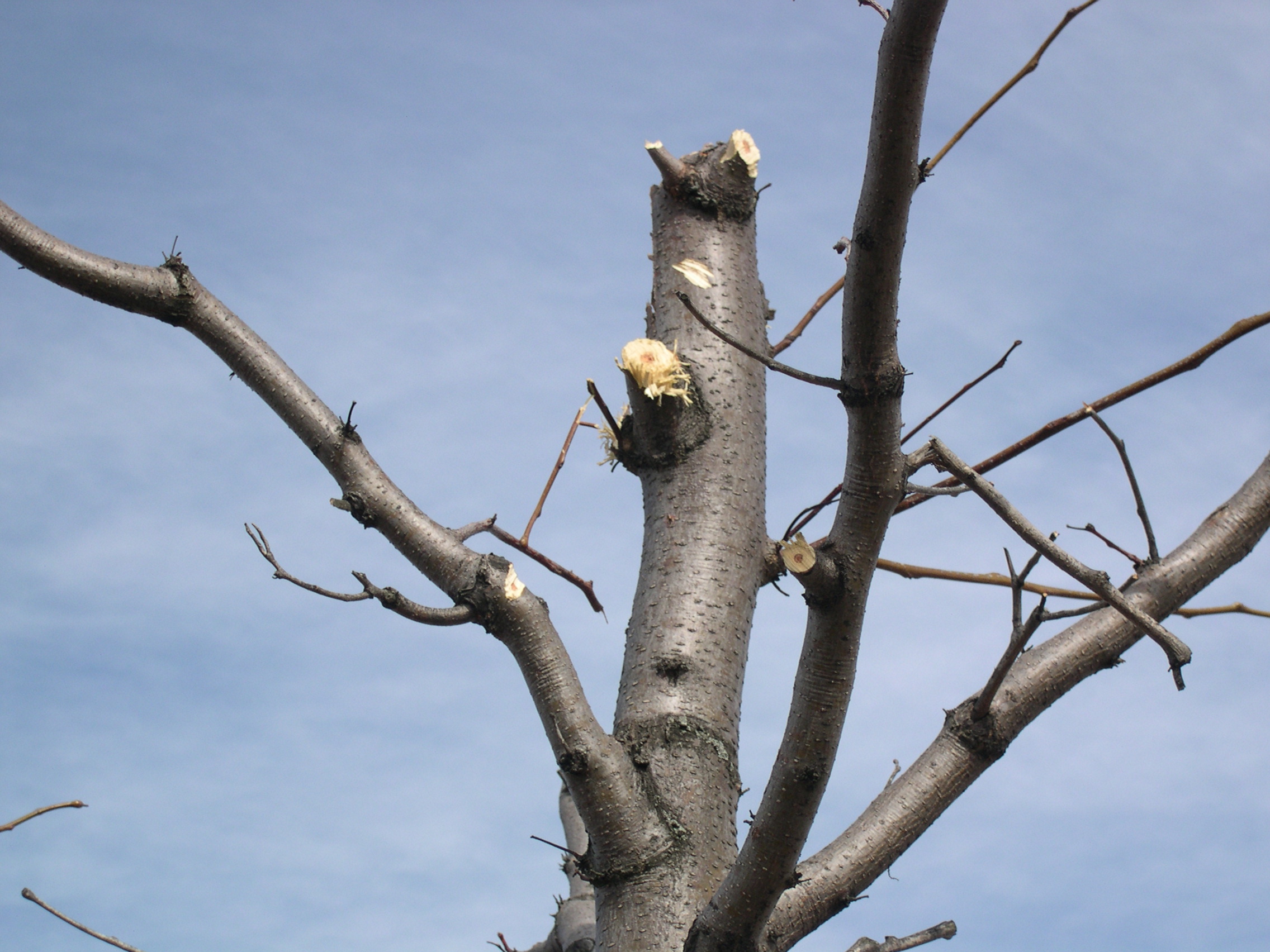
Close up of improper pruning
While walking in Cincinnati on a sunny Saturday afternoon, I documented what happens when a homeowner plants a “shrub” that grows 35-40’ tall and wide in its native habitat. Yews (Taxus species and hybrids) have long been pruned into shape by gardeners who wish to screen or decorate with plants. In this case, the yews outgrew their space, and the only option was to remove most of their understories. Too bad the stub cuts were left behind.
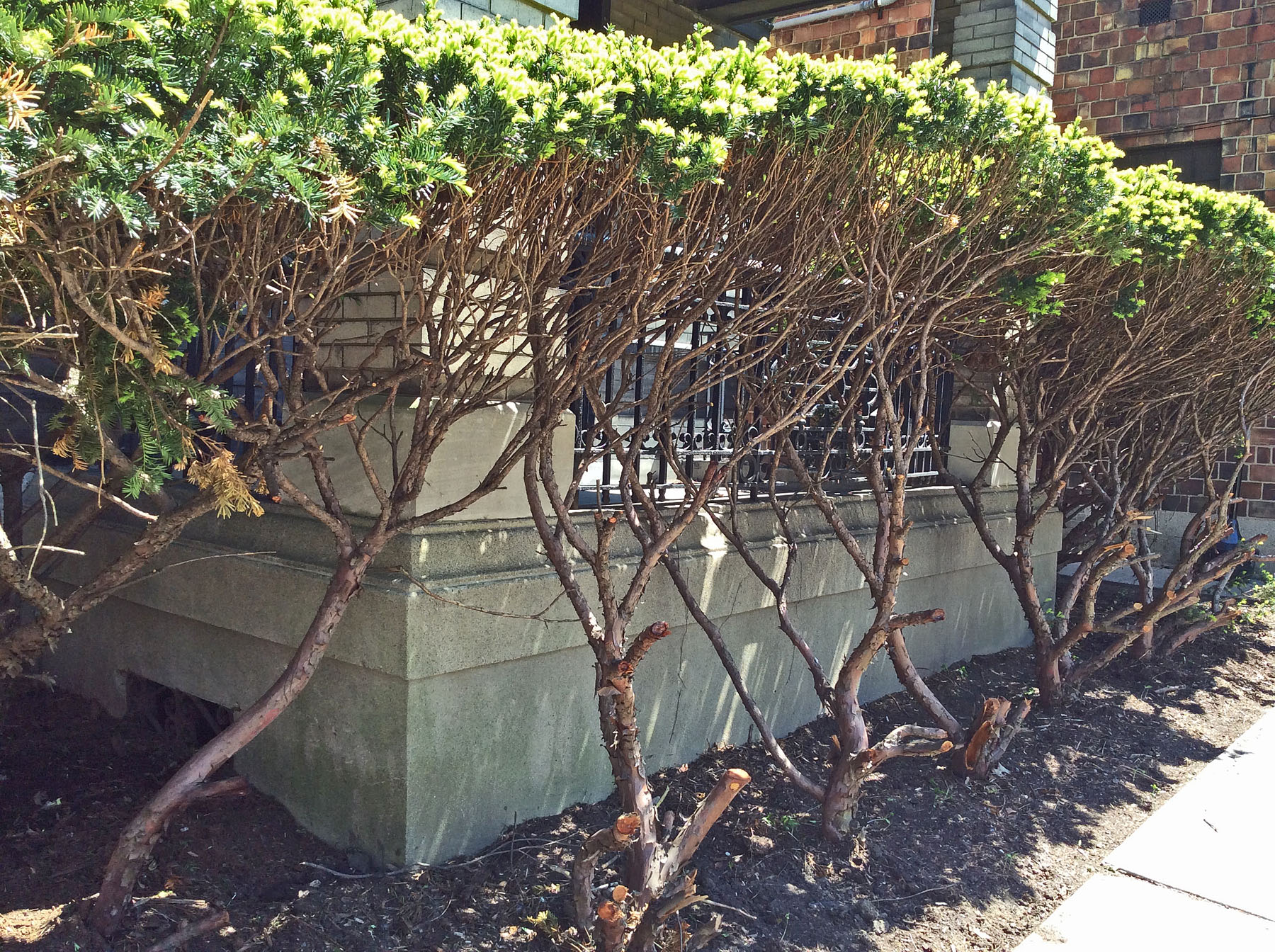
This shouldn’t happen to a yew!
One last picture of scary pruning, this time in my neighbor’s yard: line clearance done without proper clean-up. Lower branches, which had been supported by the branches that had been removed to clear the line, were hanging over the lower wires. Look at the wires just left of the blue spruce. I can only think that this was the last job of the day and last job in our subdivision as there were no trucks to be seen in the neighborhood. After a call to the electric company, the line clearance company sent in a crew to finish what they had started.
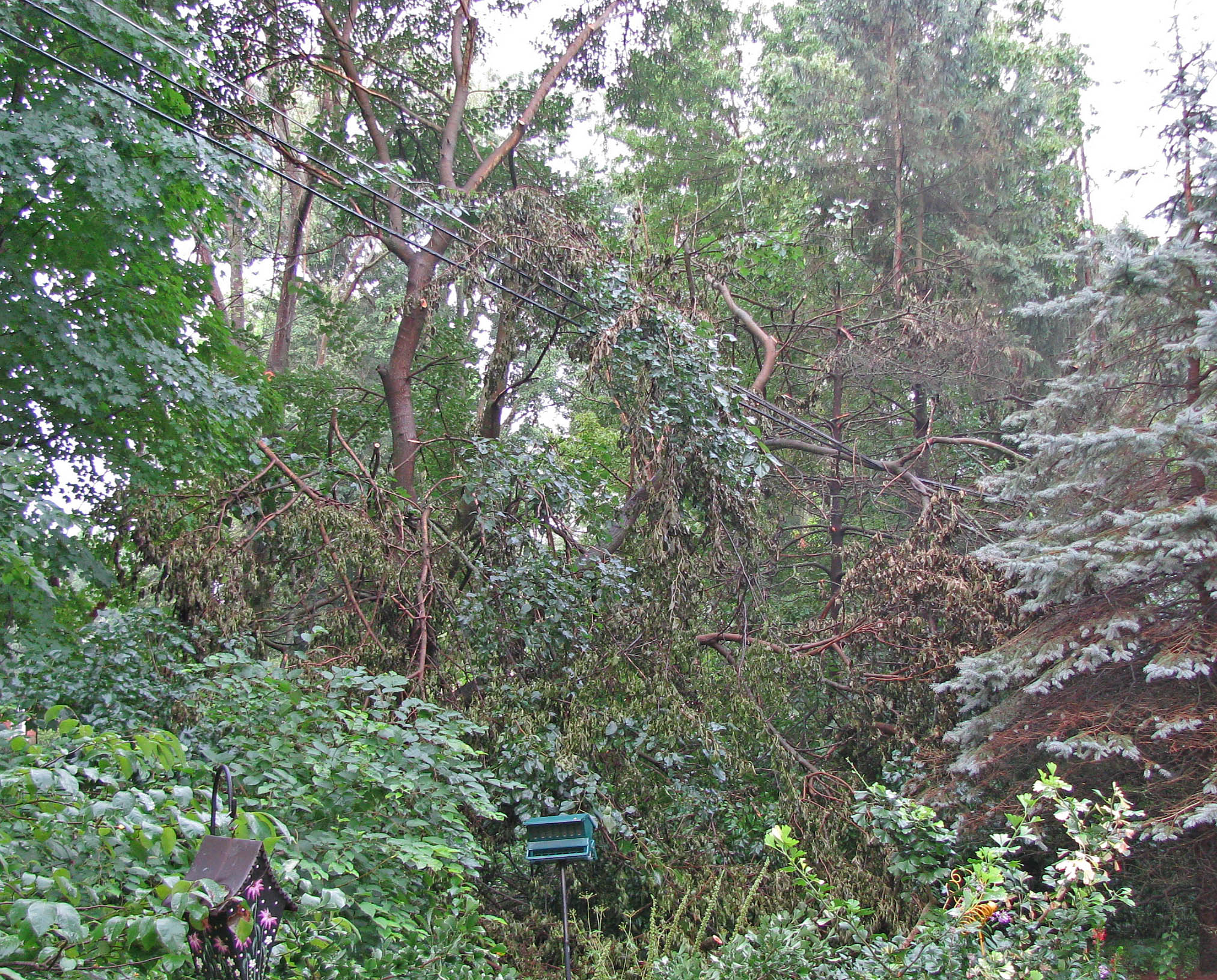
Do not stand under this accident waiting to happen; this is a “widow-maker” tree.
So on this Halloween, and all through the year, be on the look-out for scary plants; whimsical and real.
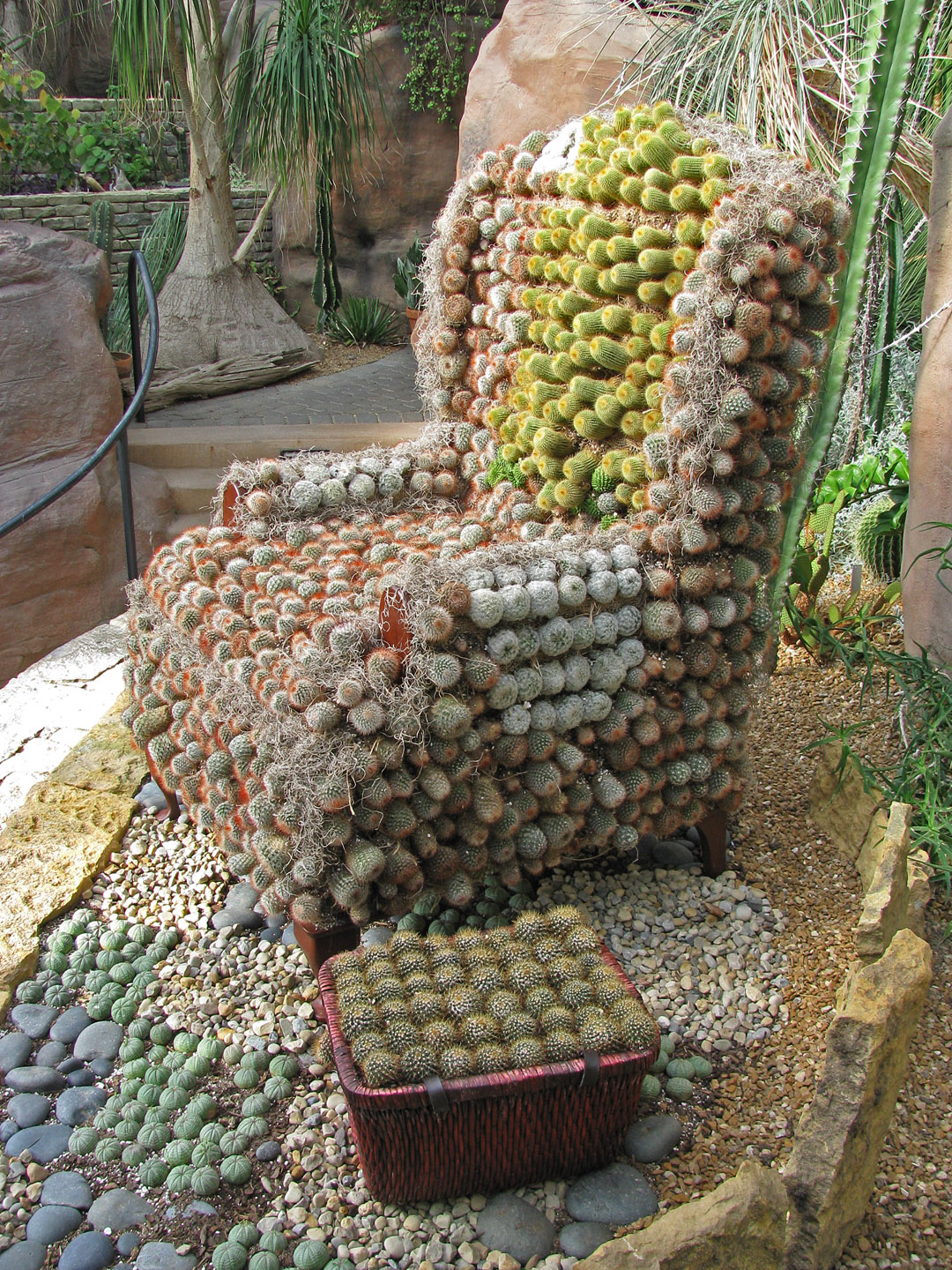
For your viewing pleasure only: an inspired cactus chair and ottoman at the Franklin Park Conservatory in 2008.
by GardenLover | Oct 15, 2015 | Special Topic
 Needles, poisons and creepy shapes make some plants scary
Needles, poisons and creepy shapes make some plants scary
By Michael Leach
My earliest memories of plants are a mixture of mostly delight and a modicum of dread. Fragrant flowers, tasty vegetables and juicy windfall apples were early favorites and remain so.
My first exposure to cactus also left a lasting impression — stickers in a tiny, curious fingertip. I instantly learned to exercise considerable caution when approaching plants armed with prickles, thorns and bristles. 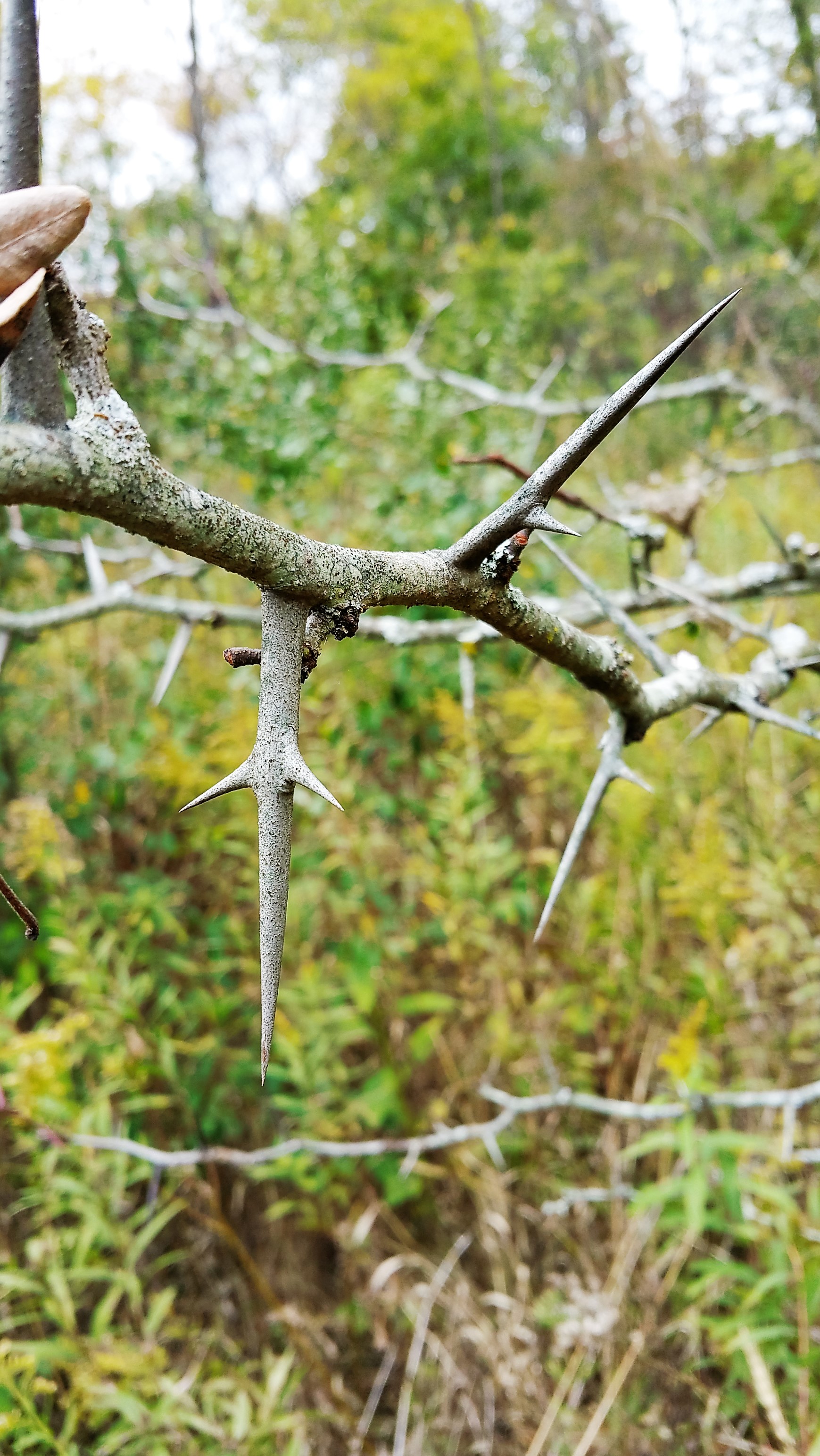
As language skills increased a vocabulary of dangerous flora was introduced. Poison ivy and poison oak are obviously plants to give an even wider berth than that cute, little potted cactus. Others have scary sounding names: deadnettle, Virginia creeper and Miss Wilmott’s ghost, to cite a few.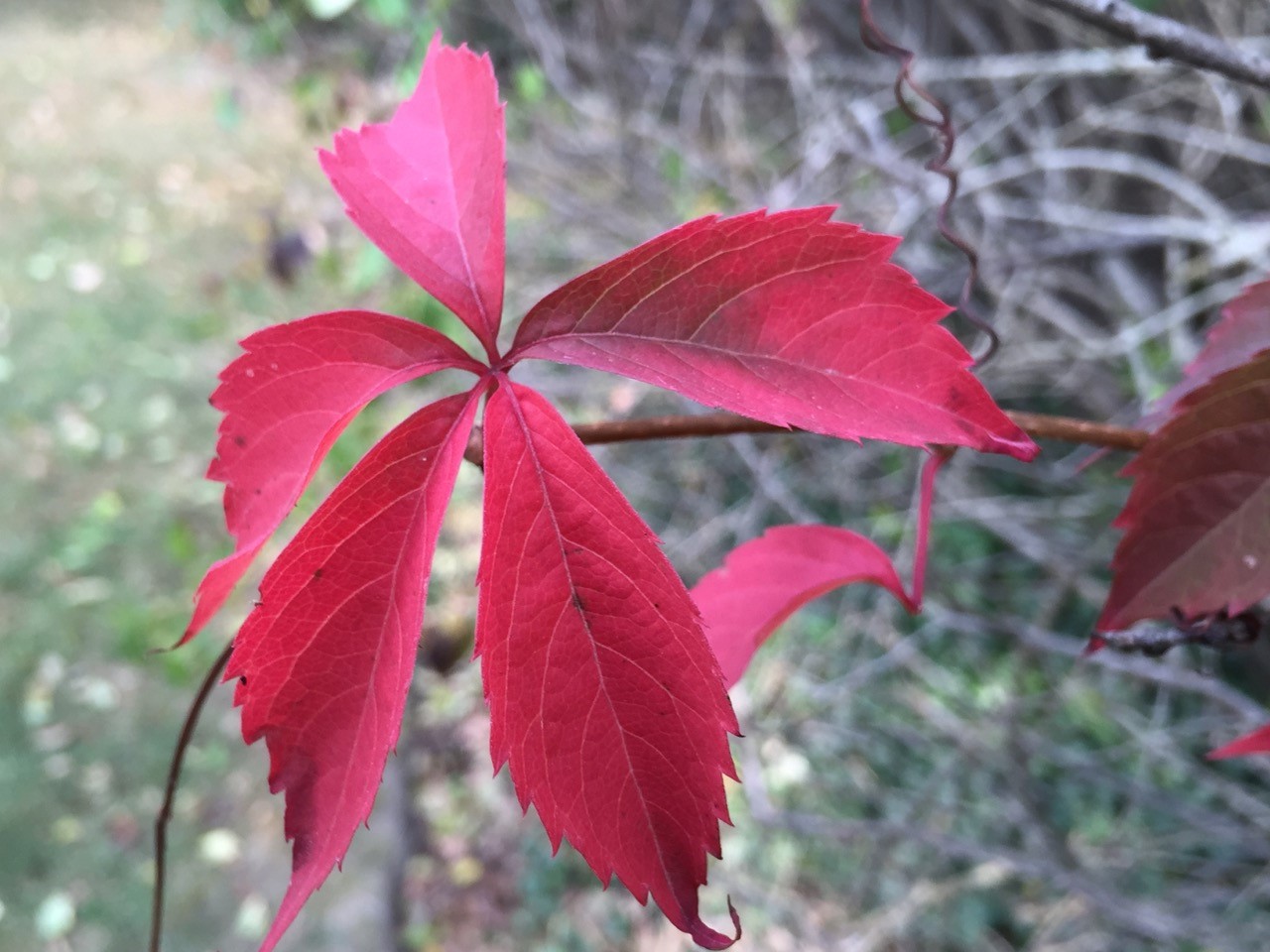
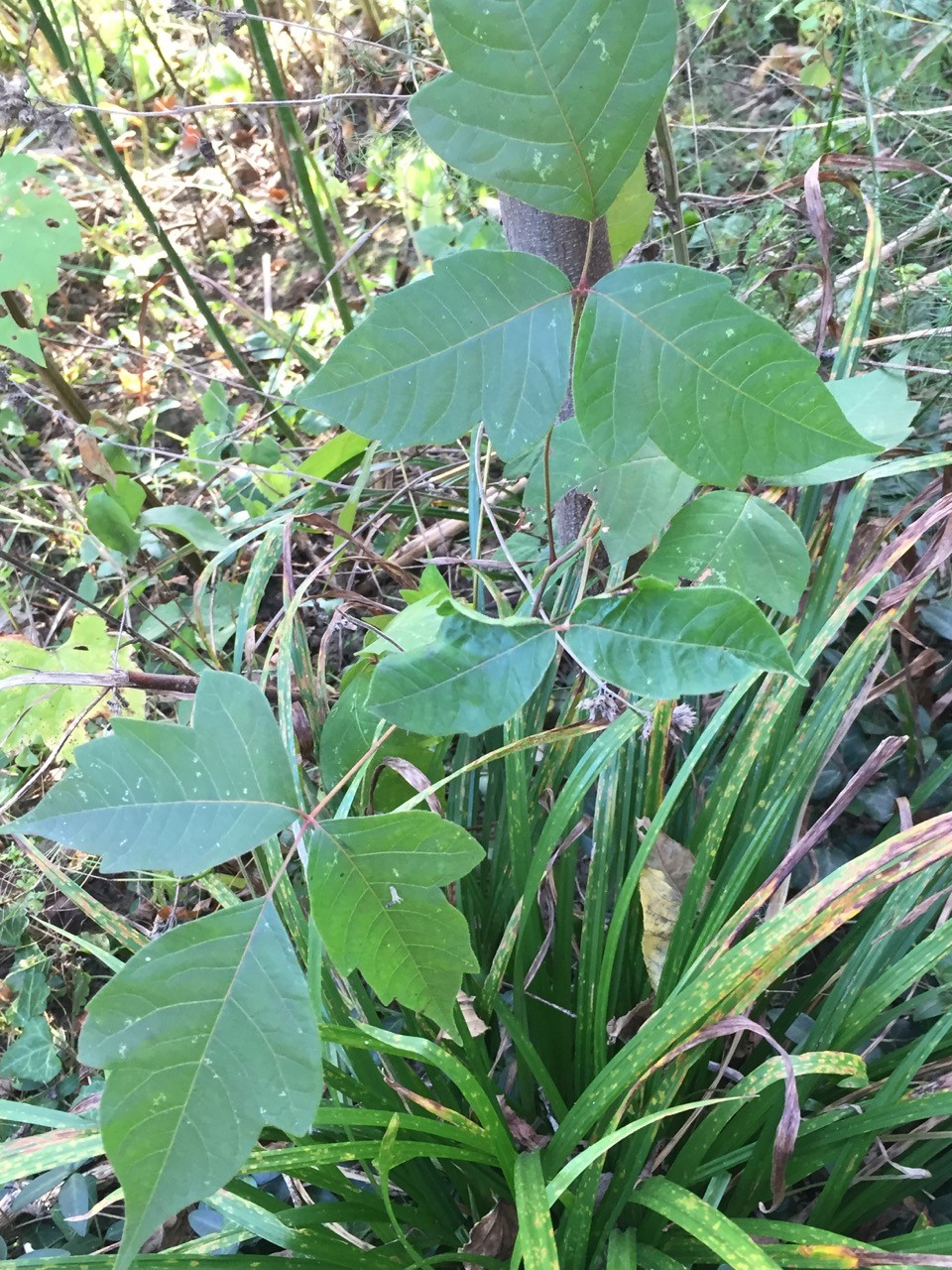
Sometimes perfectly innocent plants assume sinister attributes. Even at noon a creepy twilight fills ancient cypress swamps. The upthrusting “knees” conjure thoughts of deformed hands of zombies. Their gnarled fingers reaching up to seize an unsuspecting ankle and pull the victim into the inky water like an alligator grabbing prey.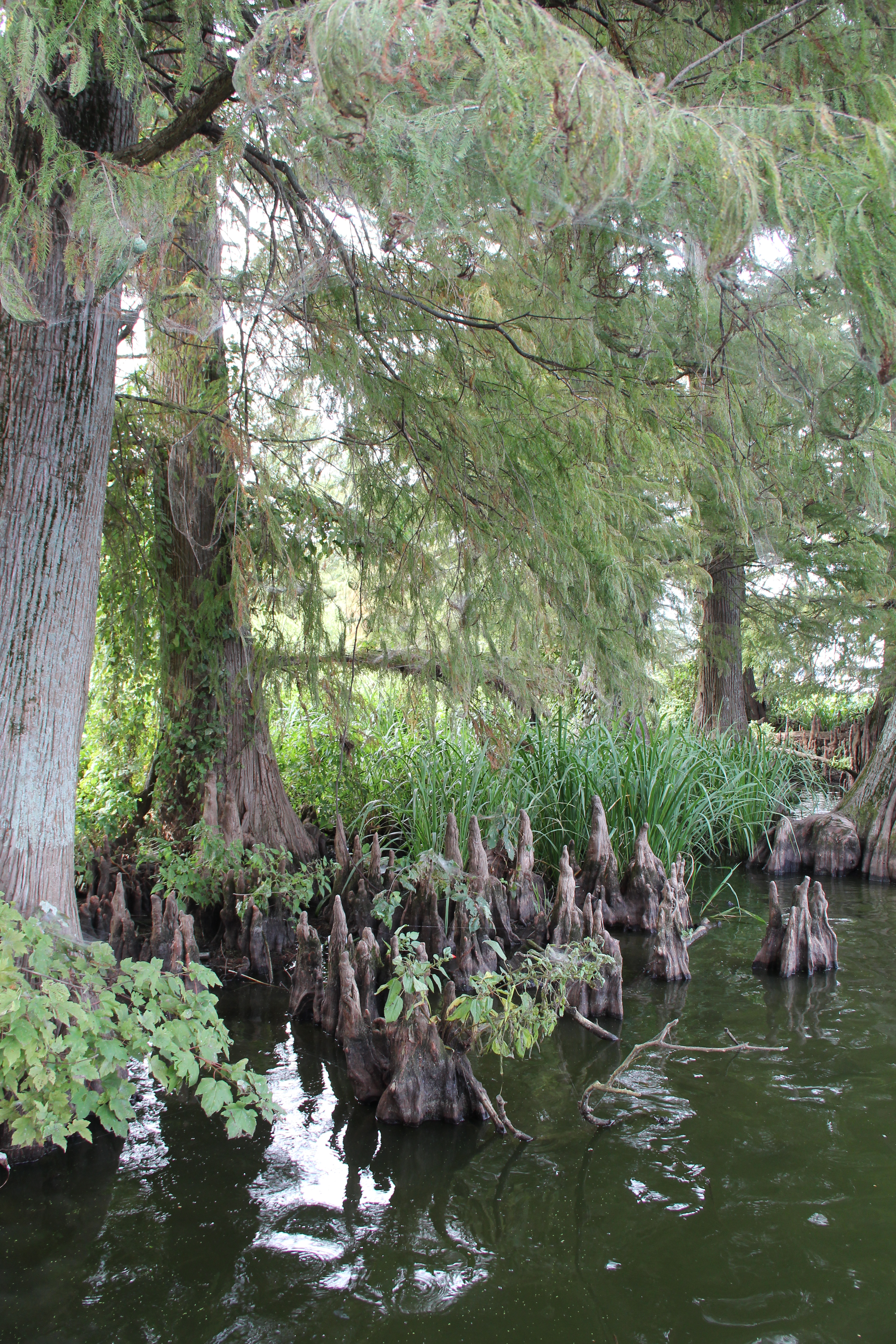
Winsome sugar maples and apple trees may also menace without intending to. Skeletal shadows of branches silently clawing on a bedroom wall or softly tapping on the window in a storm are standard props in Grade-B Hollywood horror movies. The branches of a big apple and old maples occasionally haunted my childhood bedroom, too.
Live oaks strung with long strands of the tattered lace of Spanish moss and glossy green Southern magnolia are two favorite trees, but even these have their dark side (literally). An old cemetery in Fernandina Beach, FL has stones and monuments that wear a faint patina of orangish lichen, as I recall. Unforgettable is the disquieting effect this has in the malevolent shade of a giant live oak and equally massive Southern magnolia. The hairs on the back of my neck almost rose, despite the sunny-bright spring day awaiting beyond the gloom.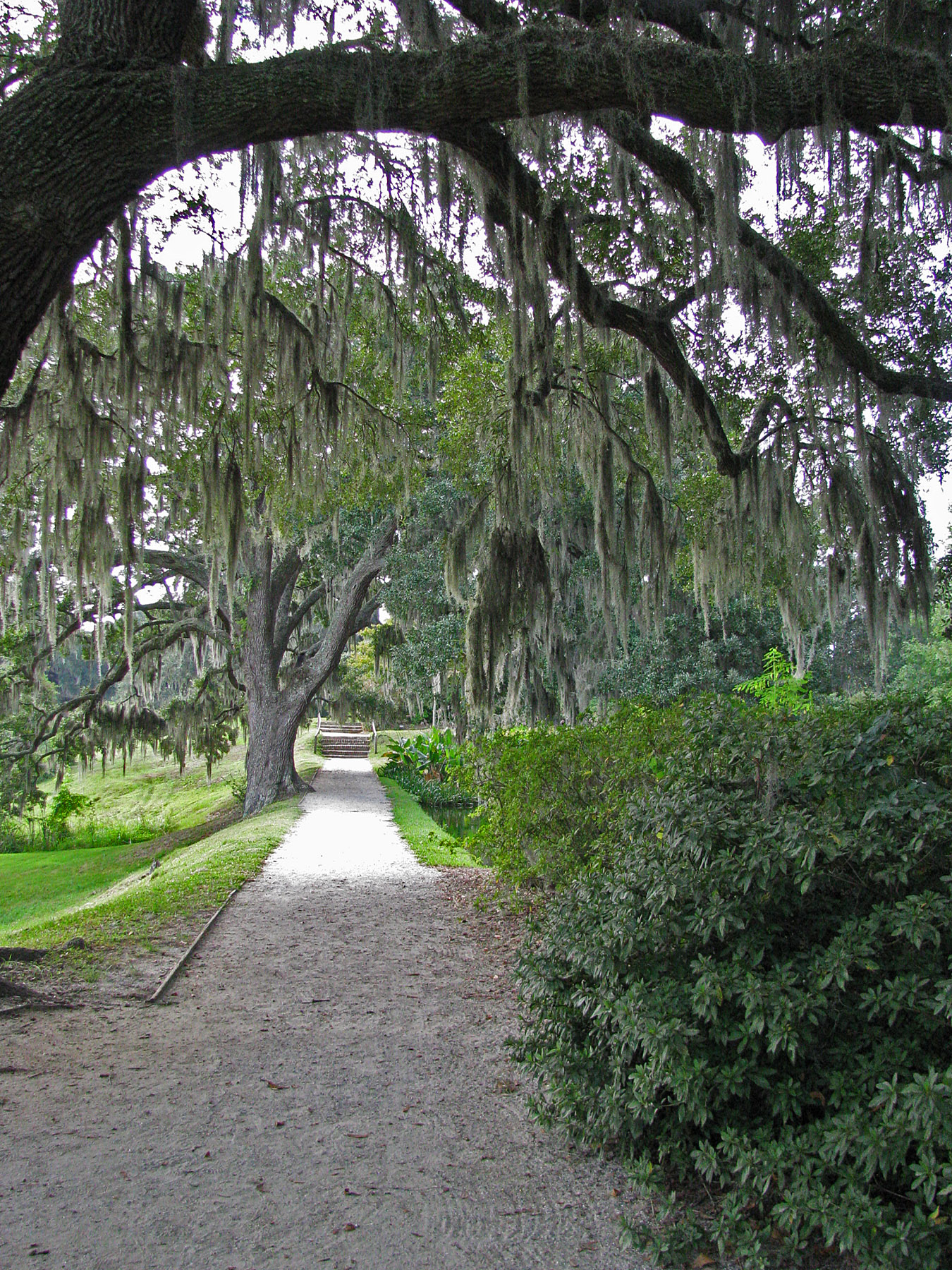
And consider corn. For those who find it difficult to navigate up and down rows in an autumn maze, the sight of towering corn plants becomes a source of frustration. Should the way out remain elusive, those stalks may inspire anger. For me, the corn maze, indeed corn fields in general, are places I shun. After seeing the movie Signs, I stay well away from corn fields lest the slithery fingers of greenish aliens snatch and drag me off to their silvery saucer.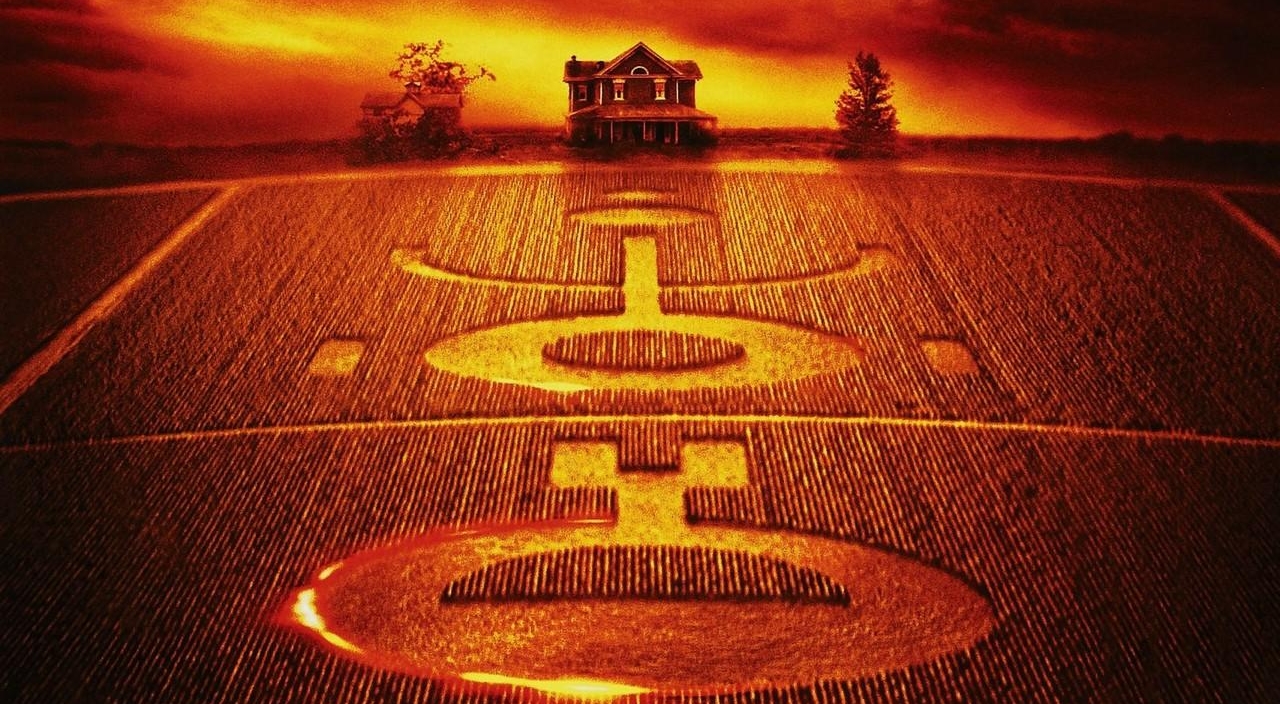
by GardenLover | Oct 9, 2015 | Garden profile, Snapshots, Special Topic
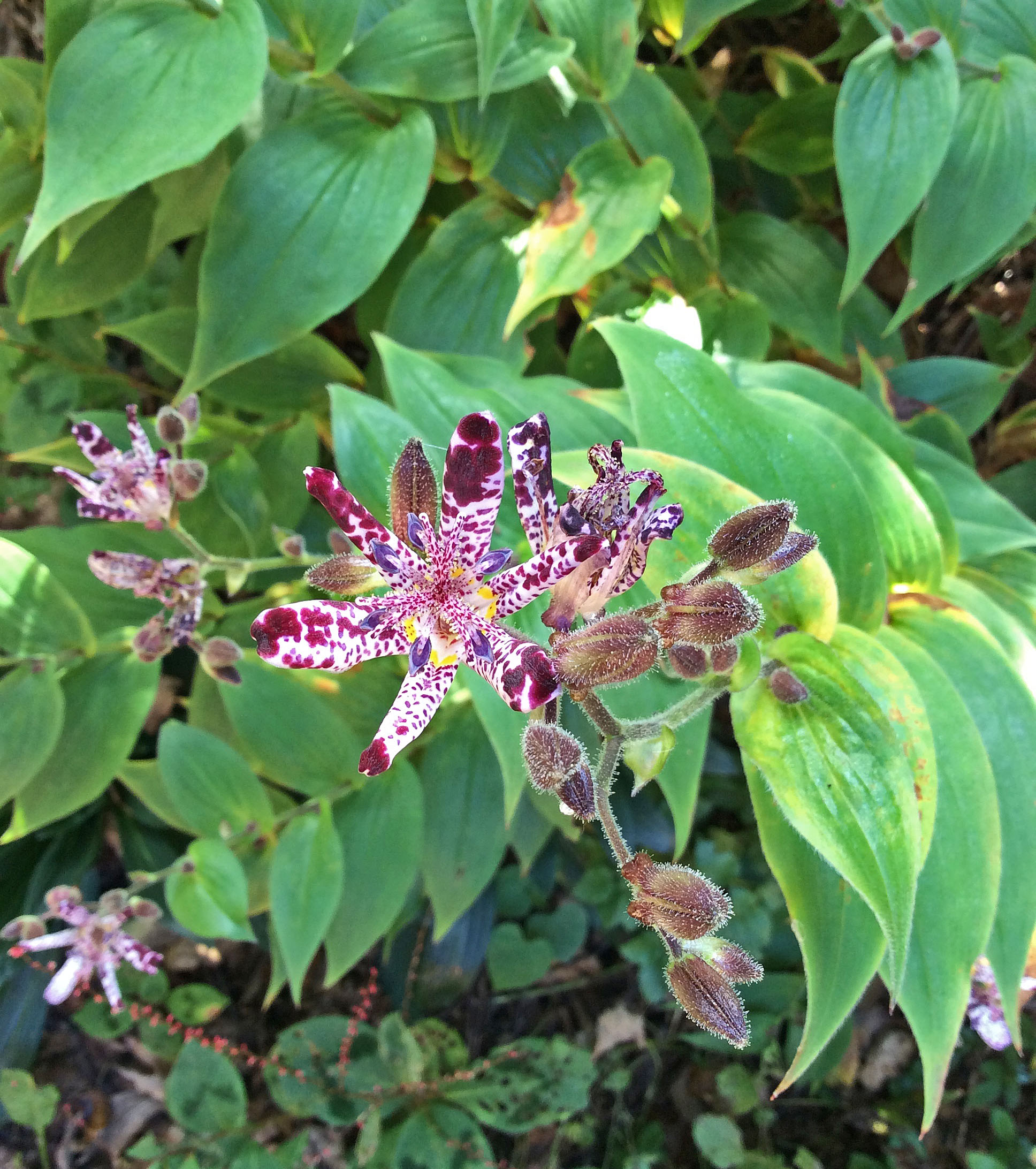 By Debra Knapke
By Debra Knapke
I’ve often heard the complaint that autumn is dull, and all we have is mums and pumpkins. Well, I recently went searching for jewels in my autumn garden and found not only jewels, but a plentiful array of flowers. Below is a glimpse of these treasures.
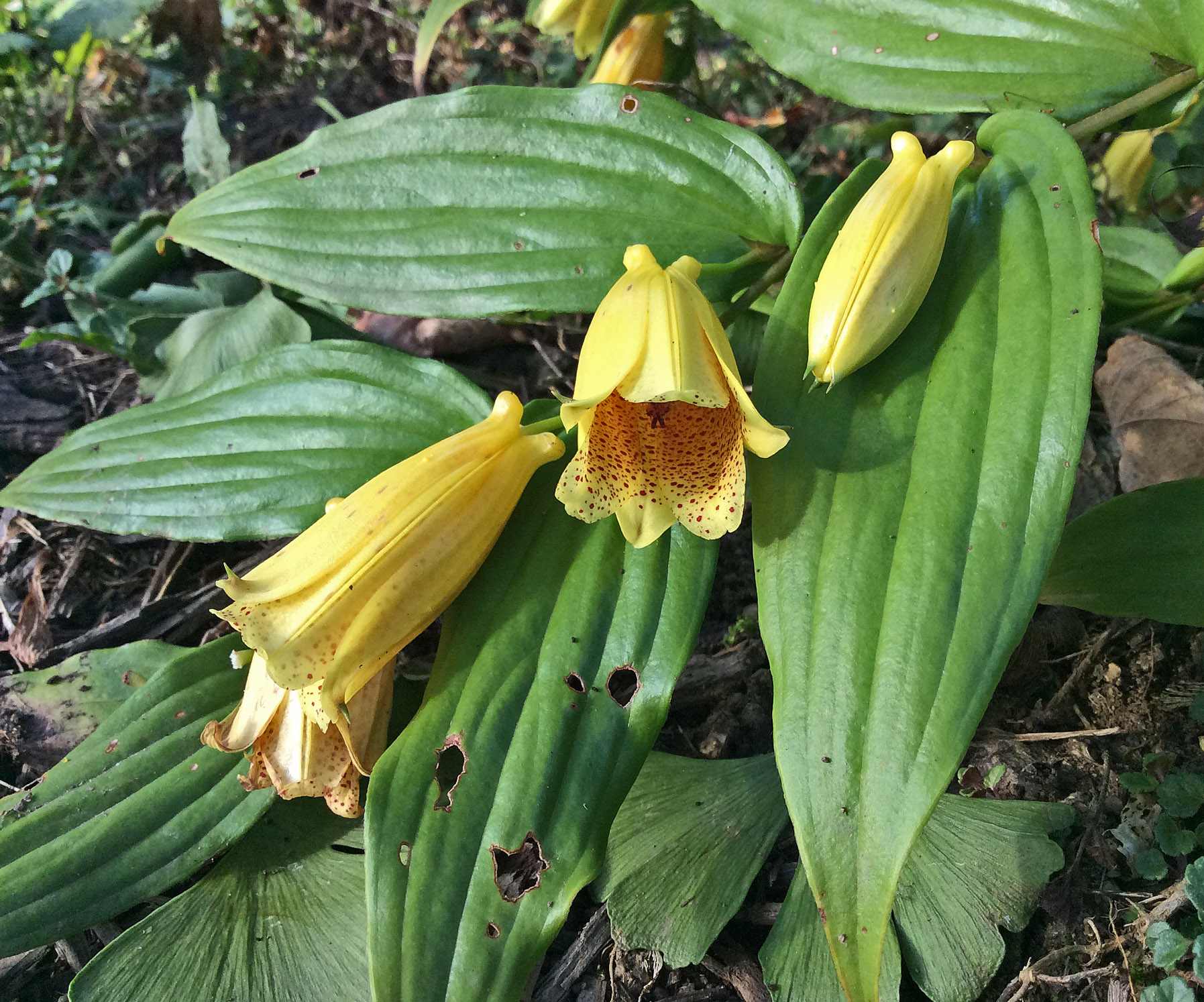
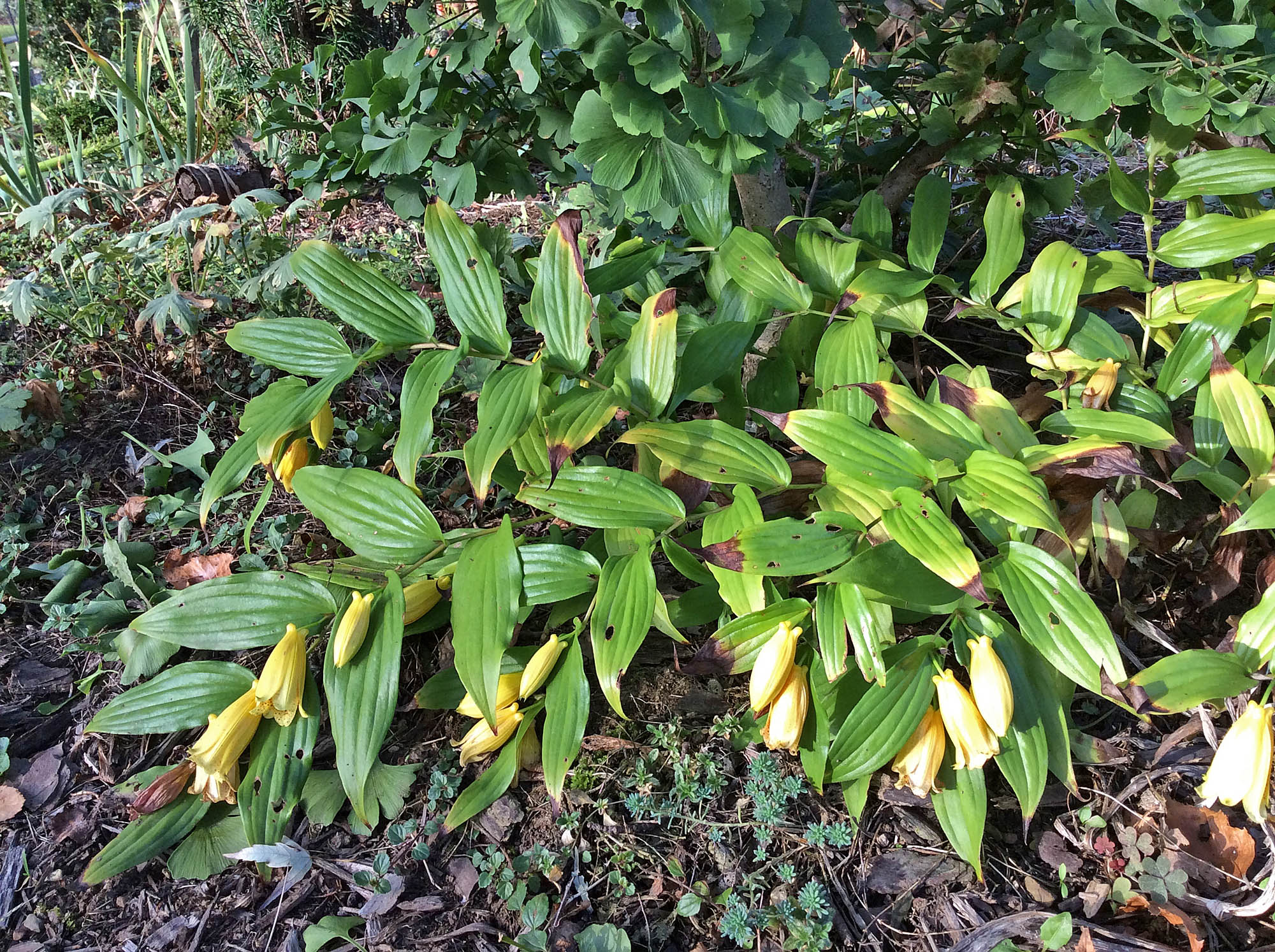 This weeping toadlily, Tricyrtus micrantha, is a rare jewel in a Central Ohio garden. In my garden since 2007, it has been a shy bloomer. But my patience was rewarded this year with this gorgeous display of 1 ½” golden bells.
This weeping toadlily, Tricyrtus micrantha, is a rare jewel in a Central Ohio garden. In my garden since 2007, it has been a shy bloomer. But my patience was rewarded this year with this gorgeous display of 1 ½” golden bells.
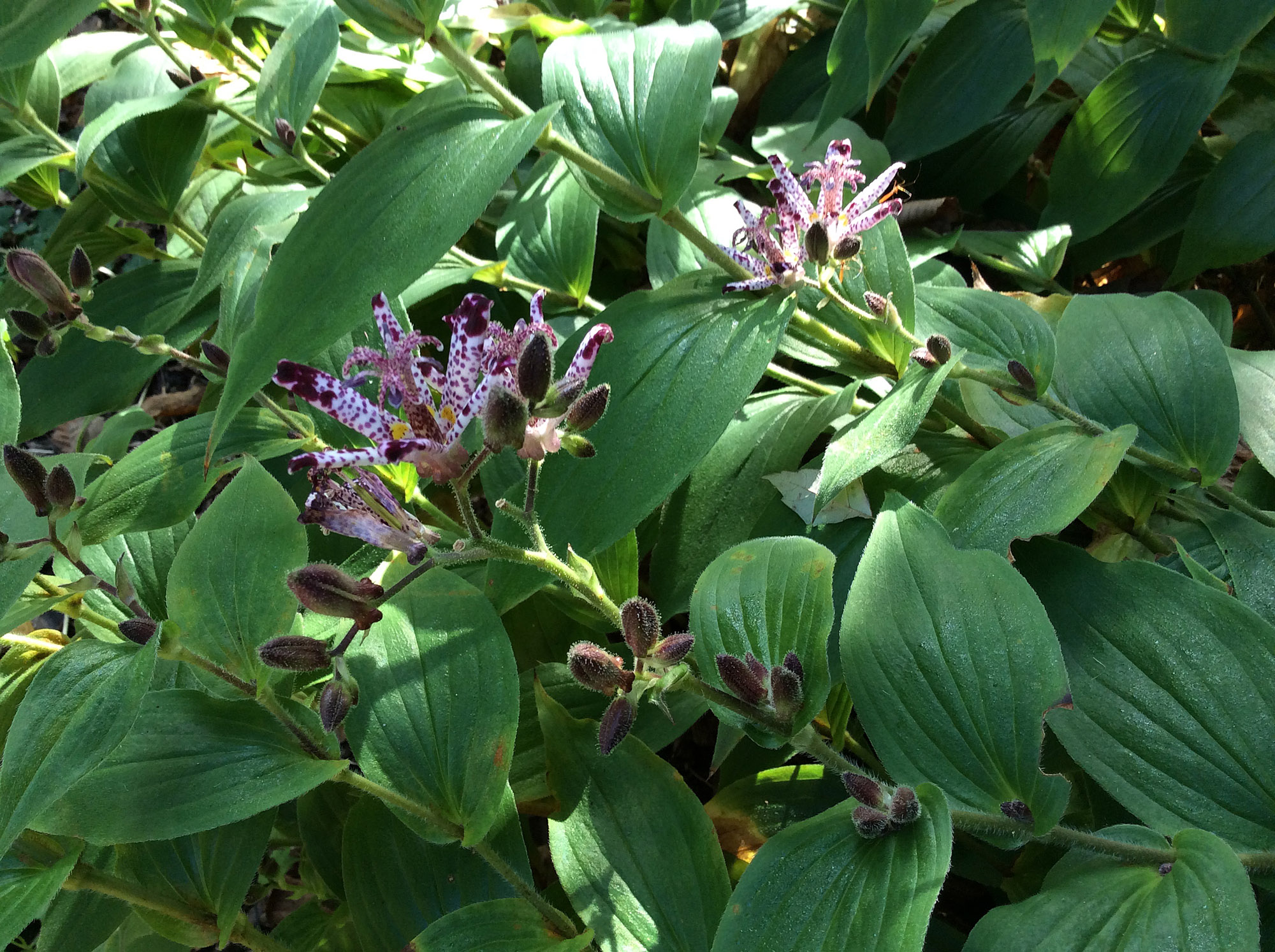 The more typical flower form of a toadlily is an open six-pointed star with six stamens (male reproductive structures) fused to a six-lobed pistil (female reproductive structure). If you look closely at the buds and stems you can see how Tricyrtis hirta became known as the hairy toadlily.
The more typical flower form of a toadlily is an open six-pointed star with six stamens (male reproductive structures) fused to a six-lobed pistil (female reproductive structure). If you look closely at the buds and stems you can see how Tricyrtis hirta became known as the hairy toadlily.
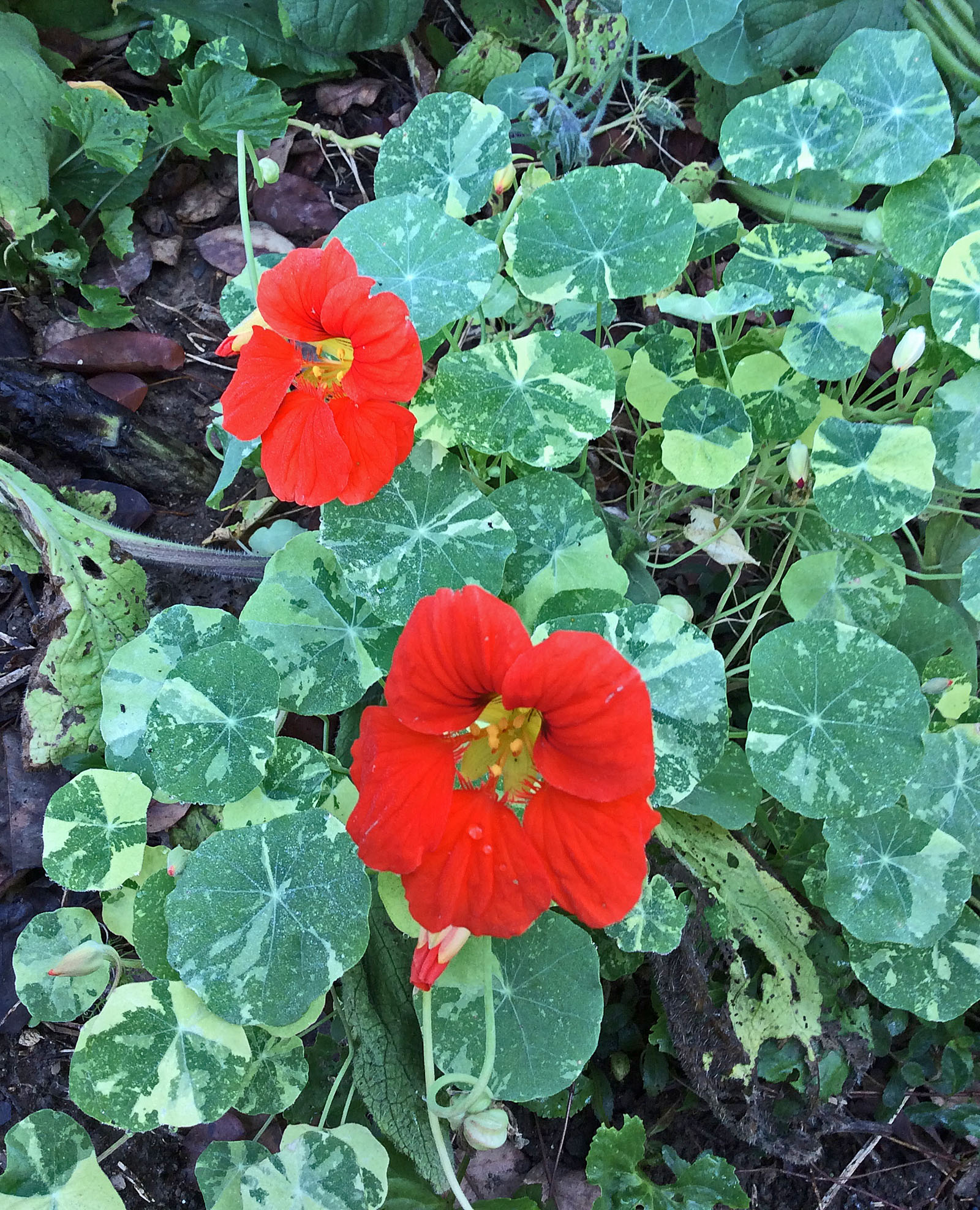
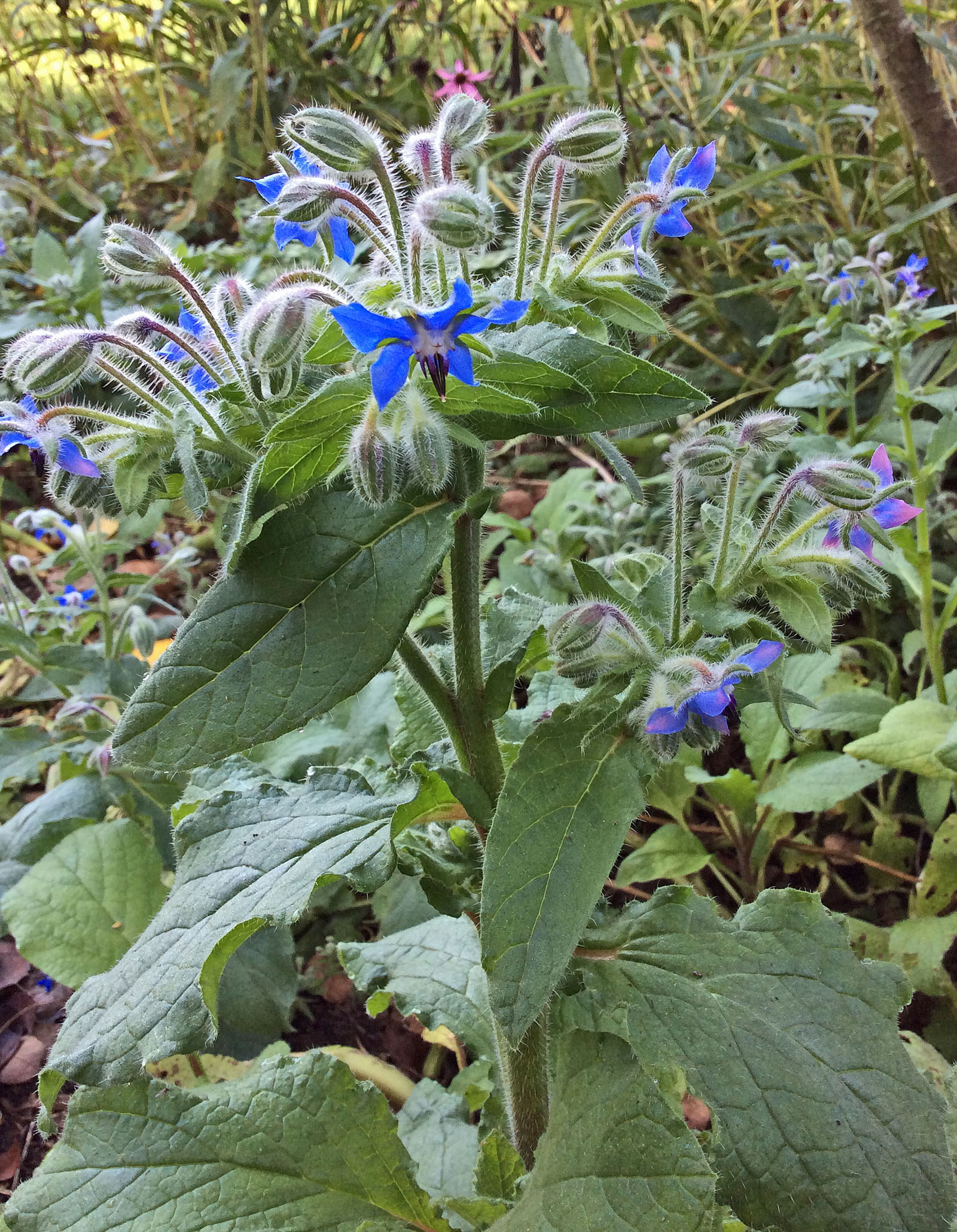 I do not have Michael’s zinnias, but this nasturtium (Tropaeolum majus ‘Alaska Mix’) offers a zing of orange which contrasts beautifully with its variegated leaves. An added bonus: the flower petals and leaves are edible. Borage (Borago officinalis) offers another edible flower; imagine a cool whisper of cucumber flavor. The blue flower is also a complimentary color to the orange nasturtium flower. I often plant them together as I find it to be a pleasing color combination.
I do not have Michael’s zinnias, but this nasturtium (Tropaeolum majus ‘Alaska Mix’) offers a zing of orange which contrasts beautifully with its variegated leaves. An added bonus: the flower petals and leaves are edible. Borage (Borago officinalis) offers another edible flower; imagine a cool whisper of cucumber flavor. The blue flower is also a complimentary color to the orange nasturtium flower. I often plant them together as I find it to be a pleasing color combination.
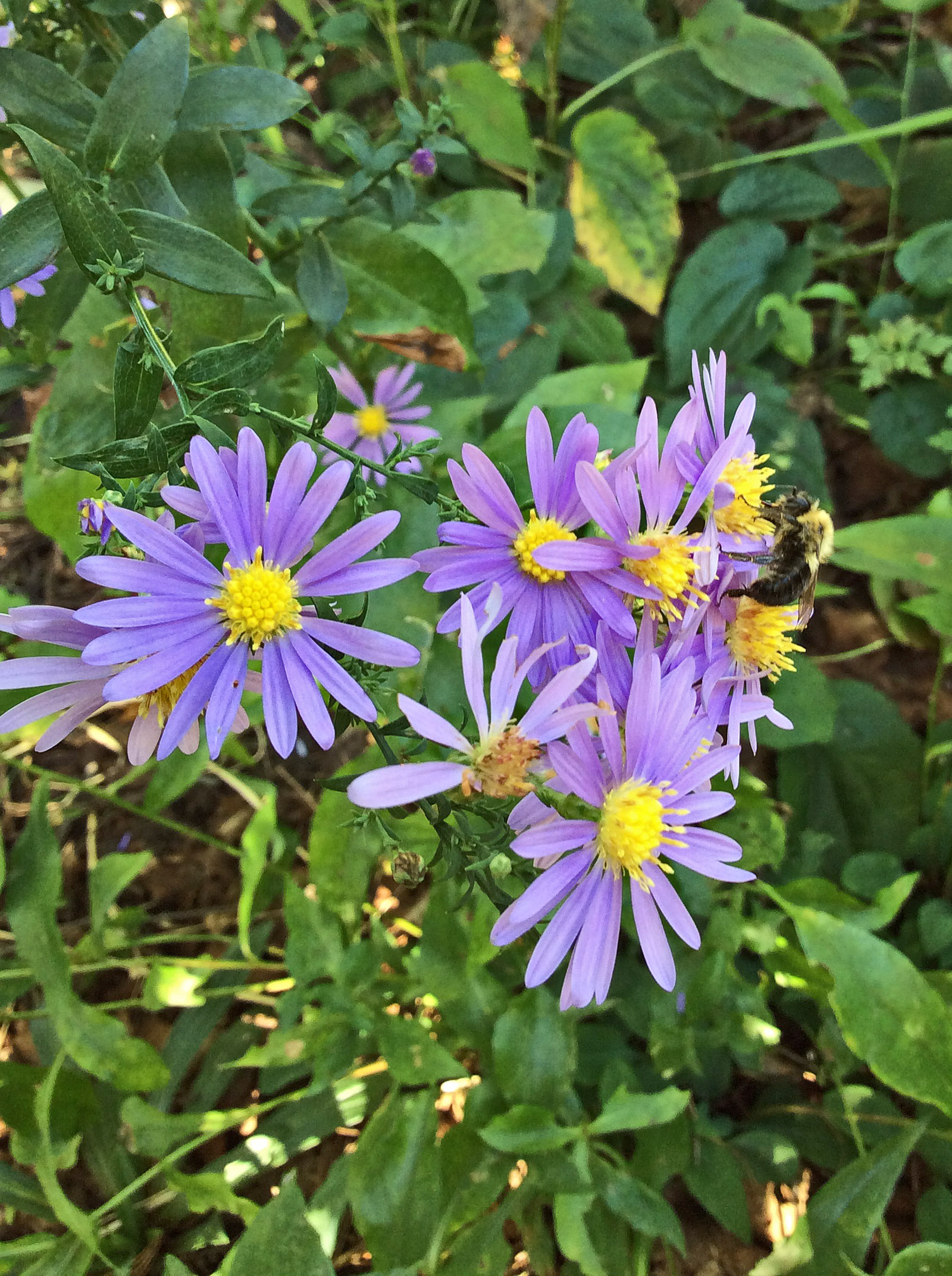 The smooth aster (Symphyotrichum laeve ‘Bluebird’) is one of many asters in my garden. Asters supply food to bees, butterflies and later, birds. Two asters I can’t show you, since they don’t bloom until late October. Perhaps, a last drink for pollinators?
The smooth aster (Symphyotrichum laeve ‘Bluebird’) is one of many asters in my garden. Asters supply food to bees, butterflies and later, birds. Two asters I can’t show you, since they don’t bloom until late October. Perhaps, a last drink for pollinators?
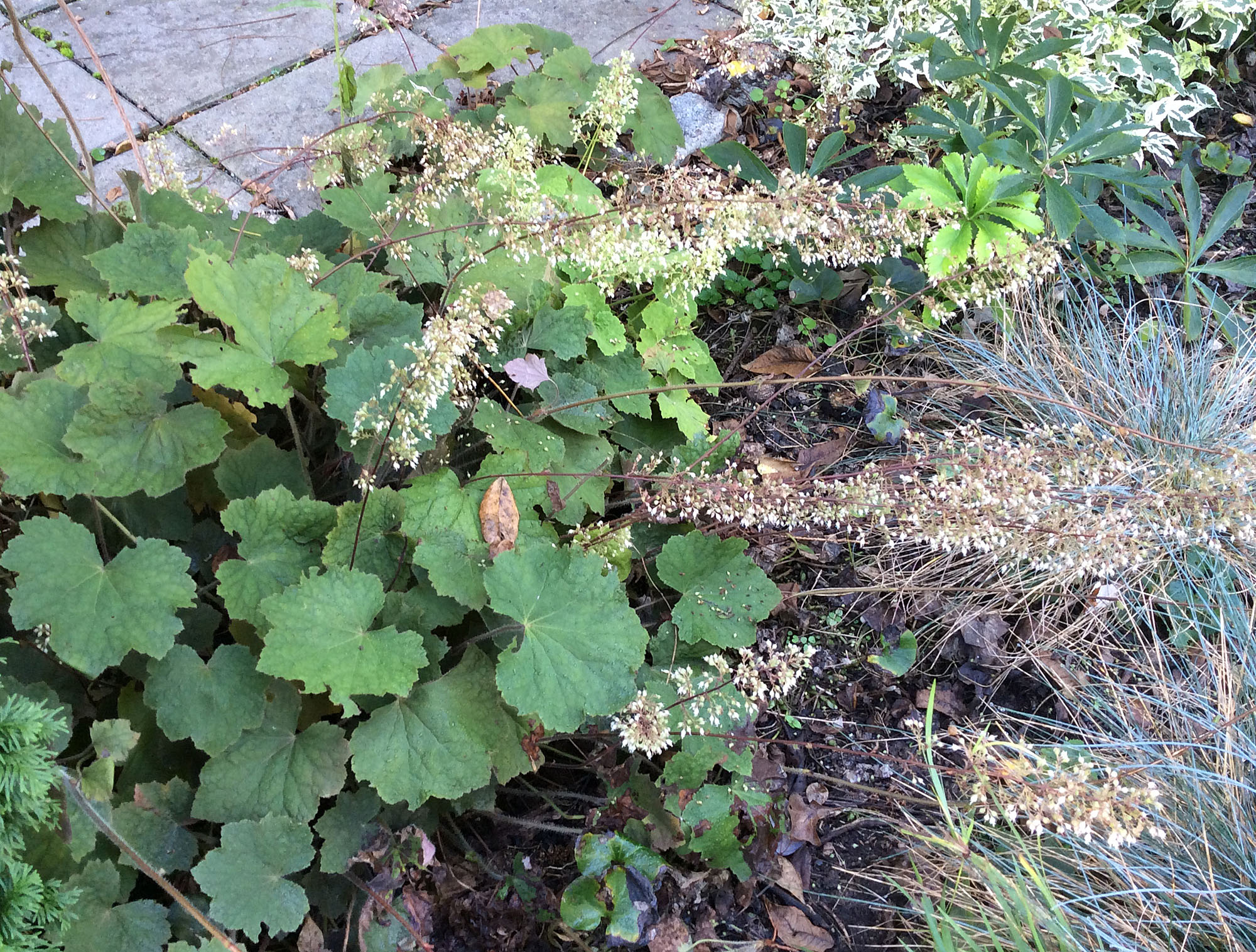 Our beautiful native Heuchera villosa and its cultivars (above is ‘Bronze Wave’) have become one of my favorite shade to part shade plants. Tolerant of dry shade once it is established, it offers a bold foliage effect and long-lasting flowers that bloom in August until frost. The inflorescences are so heavy that they gracefully bend and intermingle with other plants. Watch for hummers when heucheras are in bloom.
Our beautiful native Heuchera villosa and its cultivars (above is ‘Bronze Wave’) have become one of my favorite shade to part shade plants. Tolerant of dry shade once it is established, it offers a bold foliage effect and long-lasting flowers that bloom in August until frost. The inflorescences are so heavy that they gracefully bend and intermingle with other plants. Watch for hummers when heucheras are in bloom.
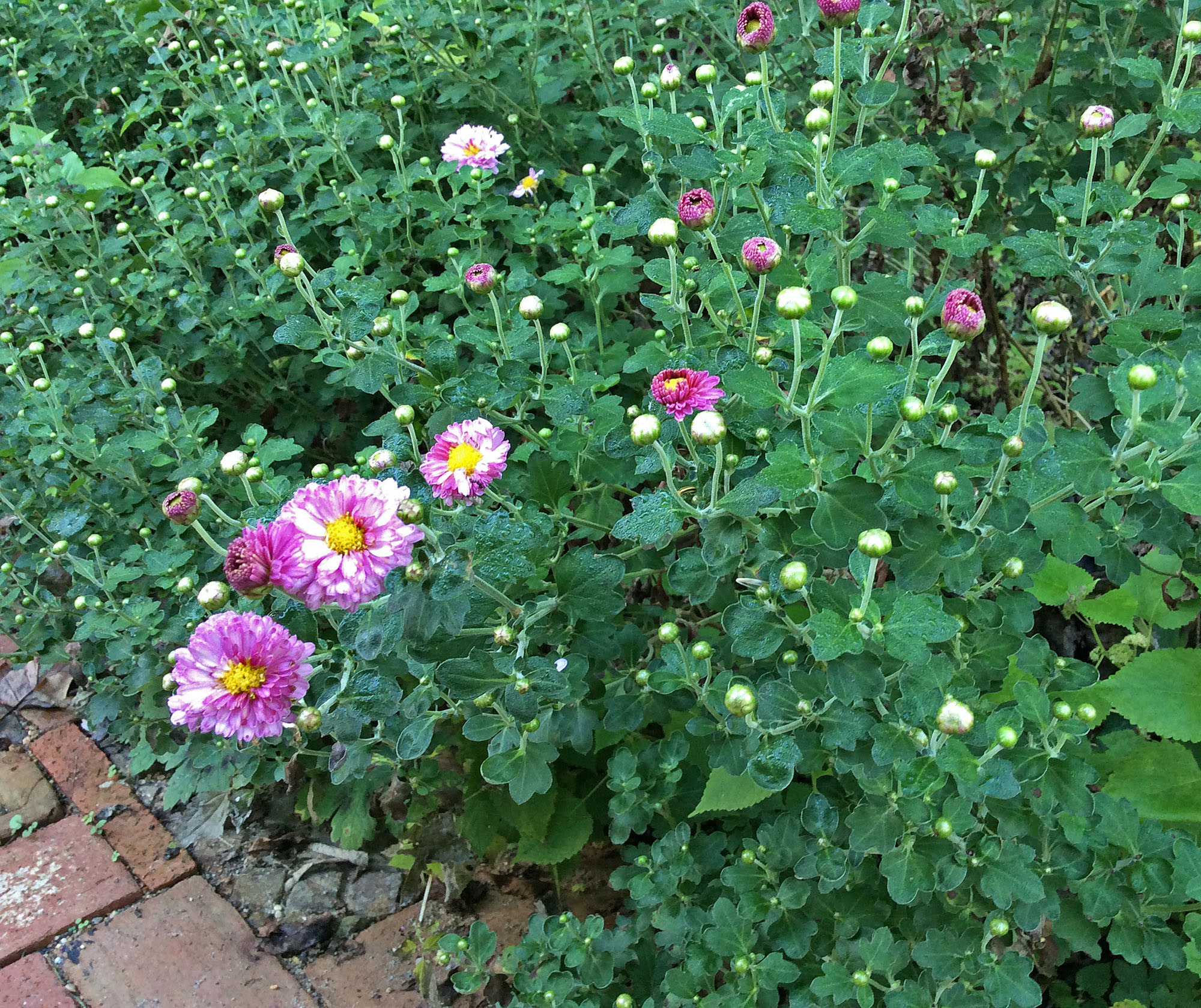 Last, but certainly not least, are the hardy mums. This is an old hybrid, Chrysanthemum ‘Mei Kyo’, which has graced my garden for 20 years. Its flowers are just starting to open. I will have flowers to bring inside until a hard frost sends this mum “to bed”.
Last, but certainly not least, are the hardy mums. This is an old hybrid, Chrysanthemum ‘Mei Kyo’, which has graced my garden for 20 years. Its flowers are just starting to open. I will have flowers to bring inside until a hard frost sends this mum “to bed”.
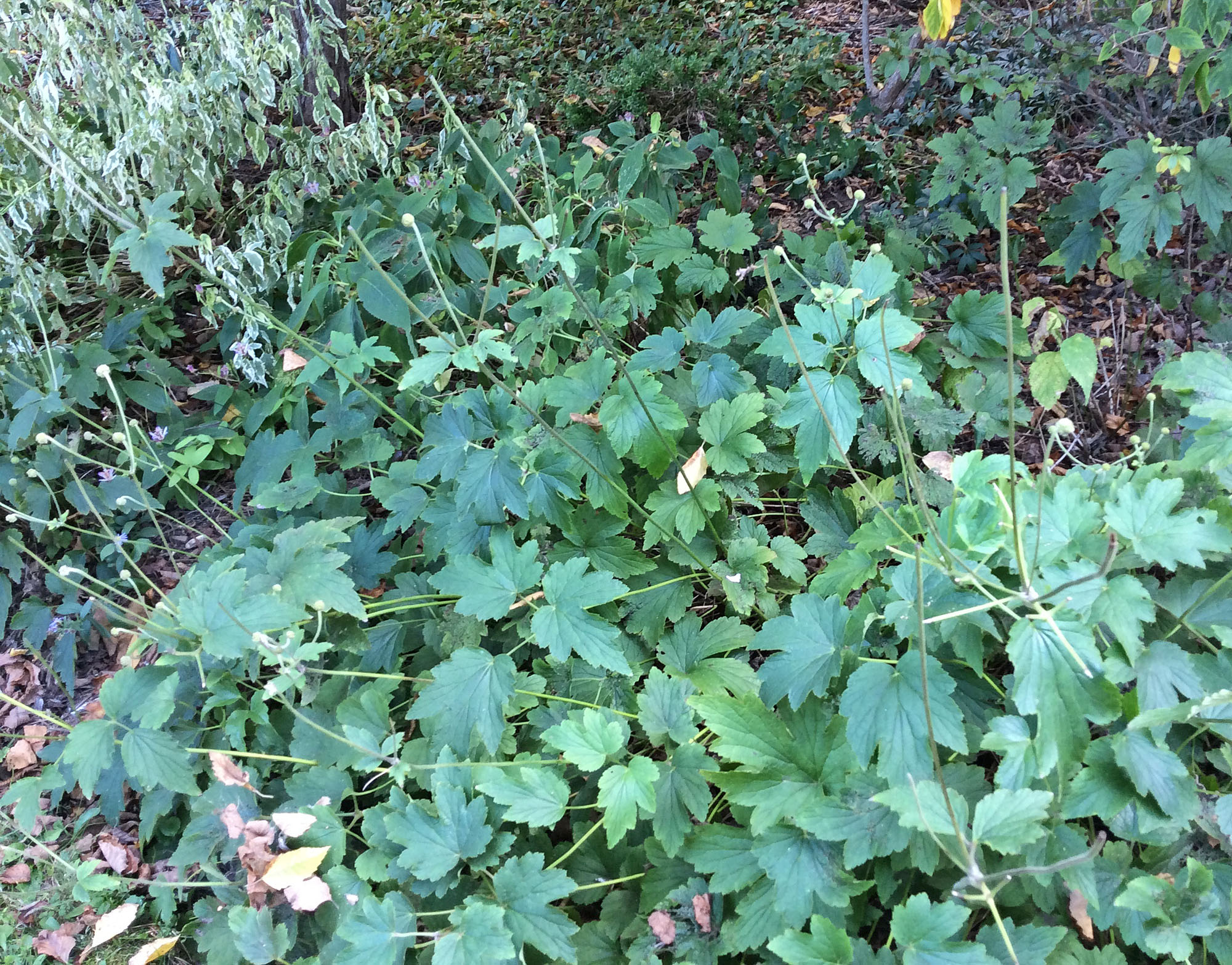 Where are the beautiful hybrid anemones that often grace an autumn garden? Well, in my garden the buds and flowers have become choice edibles for my herd of deer. I did not protect the flowers so I have beautiful leaves and naked stems adorned with a few seedheads of flowers that got away.
Where are the beautiful hybrid anemones that often grace an autumn garden? Well, in my garden the buds and flowers have become choice edibles for my herd of deer. I did not protect the flowers so I have beautiful leaves and naked stems adorned with a few seedheads of flowers that got away.
‘Wishing you a beautiful and creative fall!


















































